Quick filters:
Revolut, print Stock Photos and Images
 Sago palm (Cycas revolut) leaf. Ink black and white doodle drawing in woodcut style. Stock Photohttps://www.alamy.com/image-license-details/?v=1https://www.alamy.com/sago-palm-cycas-revolut-leaf-ink-black-and-white-doodle-drawing-in-woodcut-style-image428903465.html
Sago palm (Cycas revolut) leaf. Ink black and white doodle drawing in woodcut style. Stock Photohttps://www.alamy.com/image-license-details/?v=1https://www.alamy.com/sago-palm-cycas-revolut-leaf-ink-black-and-white-doodle-drawing-in-woodcut-style-image428903465.htmlRF2FWP6MW–Sago palm (Cycas revolut) leaf. Ink black and white doodle drawing in woodcut style.
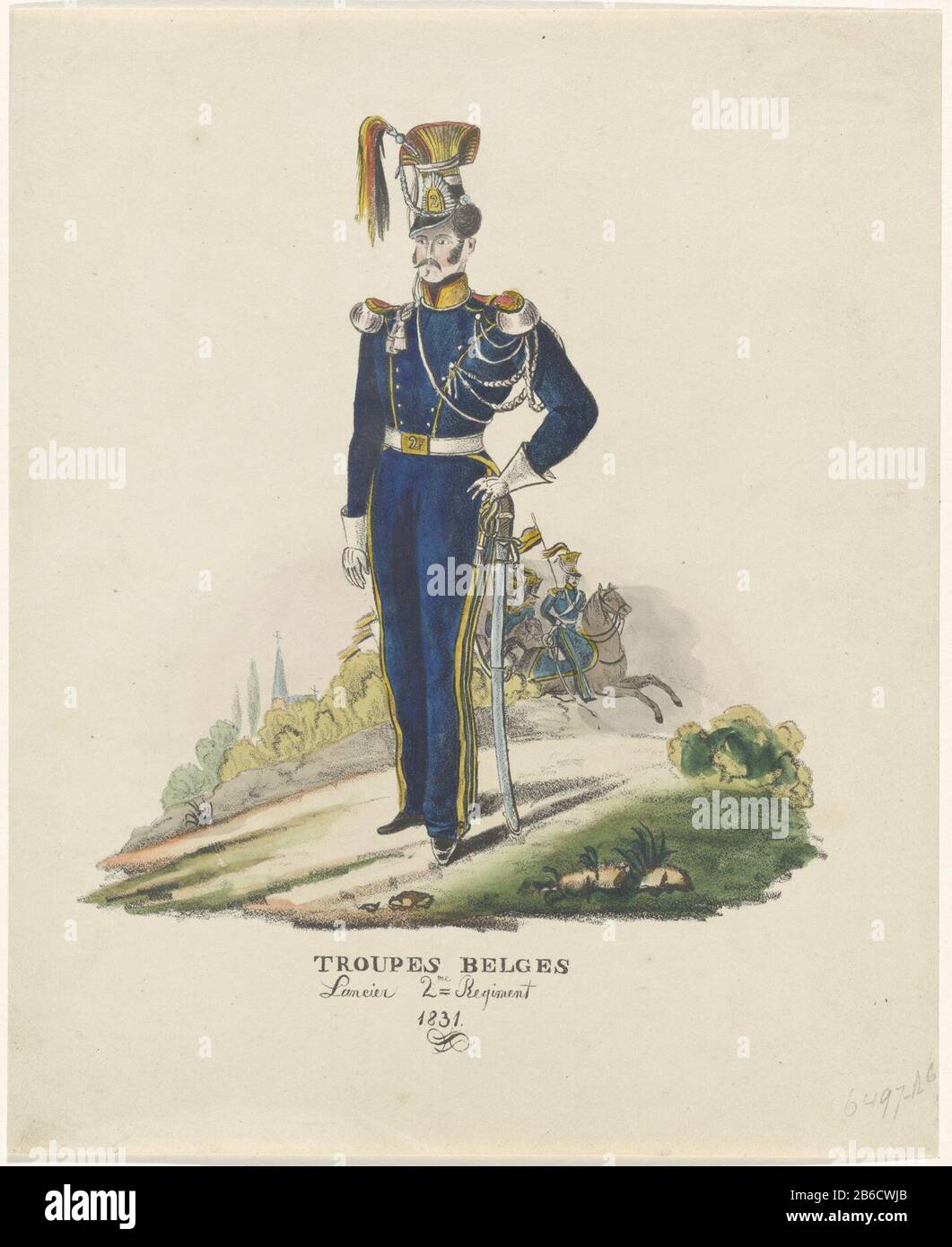 Belgian lancer, 1830 Troupes Belges Lancier 2m c Regiment 1831 (title object) an officer of the 2nd Regiment Belgian lancers, 1830. Part of a group performances of Belgian uniformen. Manufacturer : printmaker: anonymous place manufacture: Belgium Date: 1830 - 1831 Physical features: lithograph, hand-colored material: paper Technique : lithography (technique) / hand-color measurements: sheet: 285 mm × h 231 b mmToelichtingKopie to the print RP-OB-P-88240 of Jobard (FMH 6497d). Not Frederik Muller; by RPK added nummer. Subject (military) uniform clothes, costume (+ men's clothes) Belgian Revolut Stock Photohttps://www.alamy.com/image-license-details/?v=1https://www.alamy.com/belgian-lancer-1830-troupes-belges-lancier-2m-c-regiment-1831-title-object-an-officer-of-the-2nd-regiment-belgian-lancers-1830-part-of-a-group-performances-of-belgian-uniformen-manufacturer-printmaker-anonymous-place-manufacture-belgium-date-1830-1831-physical-features-lithograph-hand-colored-material-paper-technique-lithography-technique-hand-color-measurements-sheet-285-mm-h-231-b-mmtoelichtingkopie-to-the-print-rp-ob-p-88240-of-jobard-fmh-6497d-not-frederik-muller-by-rpk-added-nummer-subject-military-uniform-clothes-costume-mens-clothes-belgian-revolut-image348178835.html
Belgian lancer, 1830 Troupes Belges Lancier 2m c Regiment 1831 (title object) an officer of the 2nd Regiment Belgian lancers, 1830. Part of a group performances of Belgian uniformen. Manufacturer : printmaker: anonymous place manufacture: Belgium Date: 1830 - 1831 Physical features: lithograph, hand-colored material: paper Technique : lithography (technique) / hand-color measurements: sheet: 285 mm × h 231 b mmToelichtingKopie to the print RP-OB-P-88240 of Jobard (FMH 6497d). Not Frederik Muller; by RPK added nummer. Subject (military) uniform clothes, costume (+ men's clothes) Belgian Revolut Stock Photohttps://www.alamy.com/image-license-details/?v=1https://www.alamy.com/belgian-lancer-1830-troupes-belges-lancier-2m-c-regiment-1831-title-object-an-officer-of-the-2nd-regiment-belgian-lancers-1830-part-of-a-group-performances-of-belgian-uniformen-manufacturer-printmaker-anonymous-place-manufacture-belgium-date-1830-1831-physical-features-lithograph-hand-colored-material-paper-technique-lithography-technique-hand-color-measurements-sheet-285-mm-h-231-b-mmtoelichtingkopie-to-the-print-rp-ob-p-88240-of-jobard-fmh-6497d-not-frederik-muller-by-rpk-added-nummer-subject-military-uniform-clothes-costume-mens-clothes-belgian-revolut-image348178835.htmlRM2B6CWJB–Belgian lancer, 1830 Troupes Belges Lancier 2m c Regiment 1831 (title object) an officer of the 2nd Regiment Belgian lancers, 1830. Part of a group performances of Belgian uniformen. Manufacturer : printmaker: anonymous place manufacture: Belgium Date: 1830 - 1831 Physical features: lithograph, hand-colored material: paper Technique : lithography (technique) / hand-color measurements: sheet: 285 mm × h 231 b mmToelichtingKopie to the print RP-OB-P-88240 of Jobard (FMH 6497d). Not Frederik Muller; by RPK added nummer. Subject (military) uniform clothes, costume (+ men's clothes) Belgian Revolut
![The wise men of Gotham and their goose. British Cartoon Prints Collection , Published in: The American Revolution in drawings and prints; a checklist of 1765-1790 graphics in the Library of Congress / Compiled by Donald H. Cresswell, with a foreword by Sinclair H. Hitchings. Washington : [For sale by the Supt. of Docs, U.S. Govt. Print. Off.], 1975, no. 695. Bute, John Stuart,Earl of,1713-1792. , Geese,England,1770-1780. , Politics & government,England,1770-1780. , Government policy,England,1770-1780. , Legislators,England,1770-1780. , Bishops,England,1770-1780. , United States,History,Revolut Stock Photo The wise men of Gotham and their goose. British Cartoon Prints Collection , Published in: The American Revolution in drawings and prints; a checklist of 1765-1790 graphics in the Library of Congress / Compiled by Donald H. Cresswell, with a foreword by Sinclair H. Hitchings. Washington : [For sale by the Supt. of Docs, U.S. Govt. Print. Off.], 1975, no. 695. Bute, John Stuart,Earl of,1713-1792. , Geese,England,1770-1780. , Politics & government,England,1770-1780. , Government policy,England,1770-1780. , Legislators,England,1770-1780. , Bishops,England,1770-1780. , United States,History,Revolut Stock Photo](https://c8.alamy.com/comp/2P07A5B/the-wise-men-of-gotham-and-their-goose-british-cartoon-prints-collection-published-in-the-american-revolution-in-drawings-and-prints-a-checklist-of-1765-1790-graphics-in-the-library-of-congress-compiled-by-donald-h-cresswell-with-a-foreword-by-sinclair-h-hitchings-washington-for-sale-by-the-supt-of-docs-us-govt-print-off-1975-no-695-bute-john-stuartearl-of1713-1792-geeseengland1770-1780-politics-governmentengland1770-1780-government-policyengland1770-1780-legislatorsengland1770-1780-bishopsengland1770-1780-united-stateshistoryrevolut-2P07A5B.jpg) The wise men of Gotham and their goose. British Cartoon Prints Collection , Published in: The American Revolution in drawings and prints; a checklist of 1765-1790 graphics in the Library of Congress / Compiled by Donald H. Cresswell, with a foreword by Sinclair H. Hitchings. Washington : [For sale by the Supt. of Docs, U.S. Govt. Print. Off.], 1975, no. 695. Bute, John Stuart,Earl of,1713-1792. , Geese,England,1770-1780. , Politics & government,England,1770-1780. , Government policy,England,1770-1780. , Legislators,England,1770-1780. , Bishops,England,1770-1780. , United States,History,Revolut Stock Photohttps://www.alamy.com/image-license-details/?v=1https://www.alamy.com/the-wise-men-of-gotham-and-their-goose-british-cartoon-prints-collection-published-in-the-american-revolution-in-drawings-and-prints-a-checklist-of-1765-1790-graphics-in-the-library-of-congress-compiled-by-donald-h-cresswell-with-a-foreword-by-sinclair-h-hitchings-washington-for-sale-by-the-supt-of-docs-us-govt-print-off-1975-no-695-bute-john-stuartearl-of1713-1792-geeseengland1770-1780-politics-governmentengland1770-1780-government-policyengland1770-1780-legislatorsengland1770-1780-bishopsengland1770-1780-united-stateshistoryrevolut-image533683063.html
The wise men of Gotham and their goose. British Cartoon Prints Collection , Published in: The American Revolution in drawings and prints; a checklist of 1765-1790 graphics in the Library of Congress / Compiled by Donald H. Cresswell, with a foreword by Sinclair H. Hitchings. Washington : [For sale by the Supt. of Docs, U.S. Govt. Print. Off.], 1975, no. 695. Bute, John Stuart,Earl of,1713-1792. , Geese,England,1770-1780. , Politics & government,England,1770-1780. , Government policy,England,1770-1780. , Legislators,England,1770-1780. , Bishops,England,1770-1780. , United States,History,Revolut Stock Photohttps://www.alamy.com/image-license-details/?v=1https://www.alamy.com/the-wise-men-of-gotham-and-their-goose-british-cartoon-prints-collection-published-in-the-american-revolution-in-drawings-and-prints-a-checklist-of-1765-1790-graphics-in-the-library-of-congress-compiled-by-donald-h-cresswell-with-a-foreword-by-sinclair-h-hitchings-washington-for-sale-by-the-supt-of-docs-us-govt-print-off-1975-no-695-bute-john-stuartearl-of1713-1792-geeseengland1770-1780-politics-governmentengland1770-1780-government-policyengland1770-1780-legislatorsengland1770-1780-bishopsengland1770-1780-united-stateshistoryrevolut-image533683063.htmlRM2P07A5B–The wise men of Gotham and their goose. British Cartoon Prints Collection , Published in: The American Revolution in drawings and prints; a checklist of 1765-1790 graphics in the Library of Congress / Compiled by Donald H. Cresswell, with a foreword by Sinclair H. Hitchings. Washington : [For sale by the Supt. of Docs, U.S. Govt. Print. Off.], 1975, no. 695. Bute, John Stuart,Earl of,1713-1792. , Geese,England,1770-1780. , Politics & government,England,1770-1780. , Government policy,England,1770-1780. , Legislators,England,1770-1780. , Bishops,England,1770-1780. , United States,History,Revolut
 Revolut credit or debit card and many romanian banknotes on black background. Romanian currency concept. Stock Photohttps://www.alamy.com/image-license-details/?v=1https://www.alamy.com/revolut-credit-or-debit-card-and-many-romanian-banknotes-on-black-background-romanian-currency-concept-image530815471.html
Revolut credit or debit card and many romanian banknotes on black background. Romanian currency concept. Stock Photohttps://www.alamy.com/image-license-details/?v=1https://www.alamy.com/revolut-credit-or-debit-card-and-many-romanian-banknotes-on-black-background-romanian-currency-concept-image530815471.htmlRF2NRGMFB–Revolut credit or debit card and many romanian banknotes on black background. Romanian currency concept.
 Libellula, Print, Libellula is a genus of dragonflies, commonly called skimmers, in the family Libellulidae, distributed throughout the temperate zone of the Northern Hemisphere. Most species are found in the United States, where they are the best-known large dragonflies, often seen flying over freshwater ponds in summer. Many have showy wing patterns., Reimagined by Gibon, design of warm cheerful glowing of brightness and light rays radiance. Classic art reinvented with a modern twist. Photography inspired by futurism, embracing dynamic energy of modern technology, movement, speed and revolut Stock Photohttps://www.alamy.com/image-license-details/?v=1https://www.alamy.com/libellula-print-libellula-is-a-genus-of-dragonflies-commonly-called-skimmers-in-the-family-libellulidae-distributed-throughout-the-temperate-zone-of-the-northern-hemisphere-most-species-are-found-in-the-united-states-where-they-are-the-best-known-large-dragonflies-often-seen-flying-over-freshwater-ponds-in-summer-many-have-showy-wing-patterns-reimagined-by-gibon-design-of-warm-cheerful-glowing-of-brightness-and-light-rays-radiance-classic-art-reinvented-with-a-modern-twist-photography-inspired-by-futurism-embracing-dynamic-energy-of-modern-technology-movement-speed-and-revolut-image349758907.html
Libellula, Print, Libellula is a genus of dragonflies, commonly called skimmers, in the family Libellulidae, distributed throughout the temperate zone of the Northern Hemisphere. Most species are found in the United States, where they are the best-known large dragonflies, often seen flying over freshwater ponds in summer. Many have showy wing patterns., Reimagined by Gibon, design of warm cheerful glowing of brightness and light rays radiance. Classic art reinvented with a modern twist. Photography inspired by futurism, embracing dynamic energy of modern technology, movement, speed and revolut Stock Photohttps://www.alamy.com/image-license-details/?v=1https://www.alamy.com/libellula-print-libellula-is-a-genus-of-dragonflies-commonly-called-skimmers-in-the-family-libellulidae-distributed-throughout-the-temperate-zone-of-the-northern-hemisphere-most-species-are-found-in-the-united-states-where-they-are-the-best-known-large-dragonflies-often-seen-flying-over-freshwater-ponds-in-summer-many-have-showy-wing-patterns-reimagined-by-gibon-design-of-warm-cheerful-glowing-of-brightness-and-light-rays-radiance-classic-art-reinvented-with-a-modern-twist-photography-inspired-by-futurism-embracing-dynamic-energy-of-modern-technology-movement-speed-and-revolut-image349758907.htmlRF2B90W1F–Libellula, Print, Libellula is a genus of dragonflies, commonly called skimmers, in the family Libellulidae, distributed throughout the temperate zone of the Northern Hemisphere. Most species are found in the United States, where they are the best-known large dragonflies, often seen flying over freshwater ponds in summer. Many have showy wing patterns., Reimagined by Gibon, design of warm cheerful glowing of brightness and light rays radiance. Classic art reinvented with a modern twist. Photography inspired by futurism, embracing dynamic energy of modern technology, movement, speed and revolut
 The fallen column in the Place Vendôme, Paris, 1871. Illustration of '...the wilful destruction of this famous monument of French military glory by the Red Republican faction of the Commune...the huge mob waited quite silent, all gazing at the column... Suddenly, to the surprise of all spectators, the vast column moved, swayed, and then swept magnificently down. It fell exactly on the litter prepared for it, with a dull, heavy, lumbering sound. The shock and noise were so slight that everyone was astonished...A thick cloud of dust from the crushed and powdered masonry rose into the air; a Stock Photohttps://www.alamy.com/image-license-details/?v=1https://www.alamy.com/the-fallen-column-in-the-place-vendxf4me-paris-1871-illustration-of-the-wilful-destruction-of-this-famous-monument-of-french-military-glory-by-the-red-republican-faction-of-the-communethe-huge-mob-waited-quite-silent-all-gazing-at-the-column-suddenly-to-the-surprise-of-all-spectators-the-vast-column-moved-swayed-and-then-swept-magnificently-down-it-fell-exactly-on-the-litter-prepared-for-it-with-a-dull-heavy-lumbering-sound-the-shock-and-noise-were-so-slight-that-everyone-was-astonisheda-thick-cloud-of-dust-from-the-crushed-and-powdered-masonry-rose-into-the-air-a-image626634239.html
The fallen column in the Place Vendôme, Paris, 1871. Illustration of '...the wilful destruction of this famous monument of French military glory by the Red Republican faction of the Commune...the huge mob waited quite silent, all gazing at the column... Suddenly, to the surprise of all spectators, the vast column moved, swayed, and then swept magnificently down. It fell exactly on the litter prepared for it, with a dull, heavy, lumbering sound. The shock and noise were so slight that everyone was astonished...A thick cloud of dust from the crushed and powdered masonry rose into the air; a Stock Photohttps://www.alamy.com/image-license-details/?v=1https://www.alamy.com/the-fallen-column-in-the-place-vendxf4me-paris-1871-illustration-of-the-wilful-destruction-of-this-famous-monument-of-french-military-glory-by-the-red-republican-faction-of-the-communethe-huge-mob-waited-quite-silent-all-gazing-at-the-column-suddenly-to-the-surprise-of-all-spectators-the-vast-column-moved-swayed-and-then-swept-magnificently-down-it-fell-exactly-on-the-litter-prepared-for-it-with-a-dull-heavy-lumbering-sound-the-shock-and-noise-were-so-slight-that-everyone-was-astonisheda-thick-cloud-of-dust-from-the-crushed-and-powdered-masonry-rose-into-the-air-a-image626634239.htmlRM2YBDJA7–The fallen column in the Place Vendôme, Paris, 1871. Illustration of '...the wilful destruction of this famous monument of French military glory by the Red Republican faction of the Commune...the huge mob waited quite silent, all gazing at the column... Suddenly, to the surprise of all spectators, the vast column moved, swayed, and then swept magnificently down. It fell exactly on the litter prepared for it, with a dull, heavy, lumbering sound. The shock and noise were so slight that everyone was astonished...A thick cloud of dust from the crushed and powdered masonry rose into the air; a
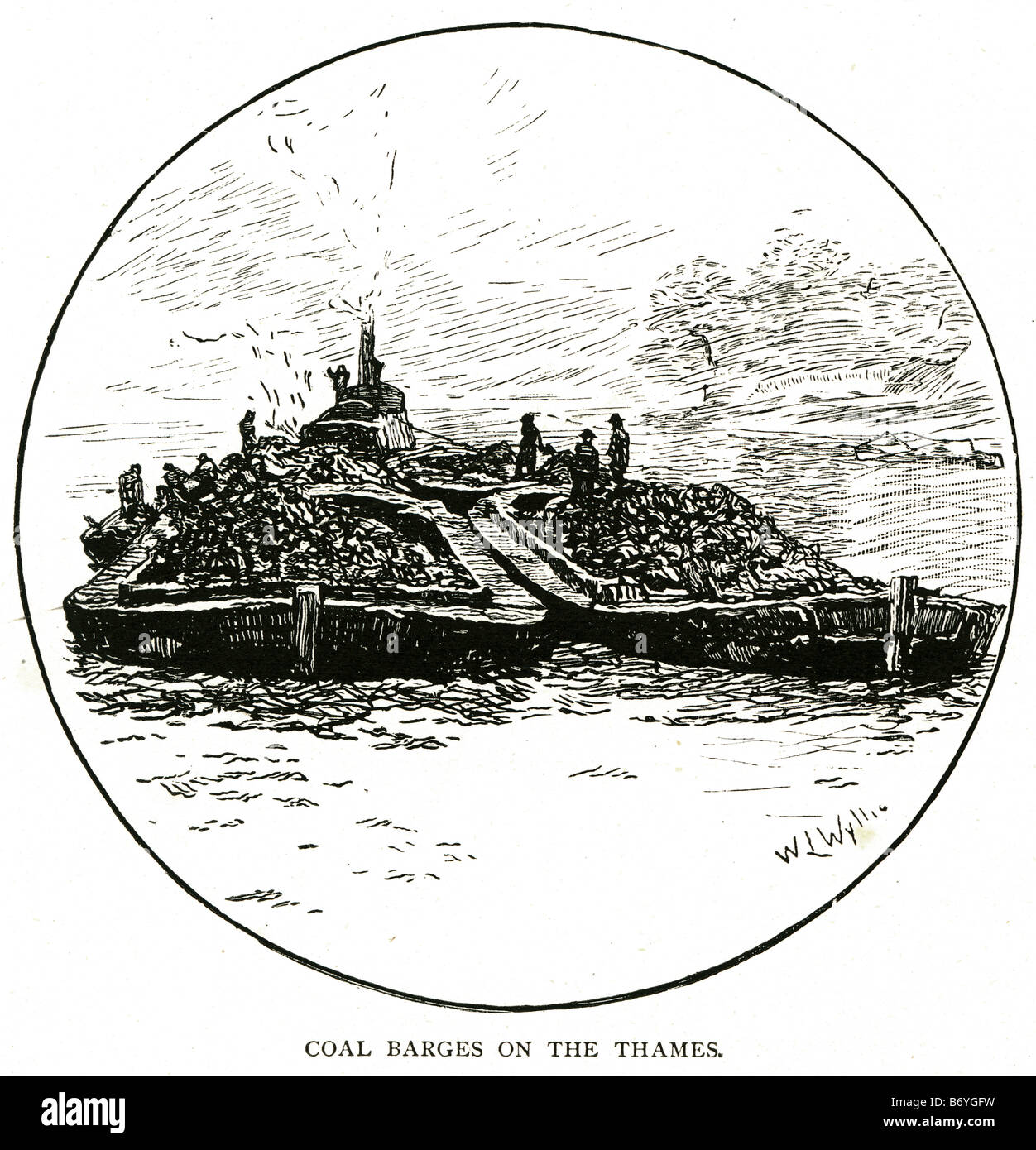 coal barges on the thames flat-bottomed boat canal transport heavy good self-propelled draft animal towpath Stock Photohttps://www.alamy.com/image-license-details/?v=1https://www.alamy.com/stock-photo-coal-barges-on-the-thames-flat-bottomed-boat-canal-transport-heavy-21503997.html
coal barges on the thames flat-bottomed boat canal transport heavy good self-propelled draft animal towpath Stock Photohttps://www.alamy.com/image-license-details/?v=1https://www.alamy.com/stock-photo-coal-barges-on-the-thames-flat-bottomed-boat-canal-transport-heavy-21503997.htmlRMB6YGFW–coal barges on the thames flat-bottomed boat canal transport heavy good self-propelled draft animal towpath
![Archive image from page 421 of Descriptive catalogue of flowering, ornamental. Descriptive catalogue of flowering, ornamental trees, shrubs, bulbs, herbs, climbers, fruit trees, &c., &c., &c. / for sale by the Yokohama Nursery Co., Limited. . descriptivecatal1909yoko Year: G15 CATALOGUE OF THE YOKOHAIA NURSERY Co., Ltd. (1912). 'Cycas revolut.T, we are spceiul (growers of this iu)l)le decorative j)lant and (aii .su])ply large quantities of any size, stems l)v weight with leaves cut off : — height. 10;) H.s. l.ooo lbs. Under G inch $4.00 $29.50 Ahove G inch 3.50 27.00 15AM15USA. (Bamboo) a Stock Photo Archive image from page 421 of Descriptive catalogue of flowering, ornamental. Descriptive catalogue of flowering, ornamental trees, shrubs, bulbs, herbs, climbers, fruit trees, &c., &c., &c. / for sale by the Yokohama Nursery Co., Limited. . descriptivecatal1909yoko Year: G15 CATALOGUE OF THE YOKOHAIA NURSERY Co., Ltd. (1912). 'Cycas revolut.T, we are spceiul (growers of this iu)l)le decorative j)lant and (aii .su])ply large quantities of any size, stems l)v weight with leaves cut off : — height. 10;) H.s. l.ooo lbs. Under G inch $4.00 $29.50 Ahove G inch 3.50 27.00 15AM15USA. (Bamboo) a Stock Photo](https://c8.alamy.com/comp/W1BKT8/archive-image-from-page-421-of-descriptive-catalogue-of-flowering-ornamental-descriptive-catalogue-of-flowering-ornamental-trees-shrubs-bulbs-herbs-climbers-fruit-trees-c-c-c-for-sale-by-the-yokohama-nursery-co-limited-descriptivecatal1909yoko-year-g15-catalogue-of-the-yokohaia-nursery-co-ltd-1912-cycas-revolutt-we-are-spceiul-growers-of-this-iulle-decorative-jlant-and-aii-su-ply-large-quantities-of-any-size-stems-lv-weight-with-leaves-cut-off-height-10-hs-looo-lbs-under-g-inch-400-2950-ahove-g-inch-350-2700-15am15usa-bamboo-a-W1BKT8.jpg) Archive image from page 421 of Descriptive catalogue of flowering, ornamental. Descriptive catalogue of flowering, ornamental trees, shrubs, bulbs, herbs, climbers, fruit trees, &c., &c., &c. / for sale by the Yokohama Nursery Co., Limited. . descriptivecatal1909yoko Year: G15 CATALOGUE OF THE YOKOHAIA NURSERY Co., Ltd. (1912). 'Cycas revolut.T, we are spceiul (growers of this iu)l)le decorative j)lant and (aii .su])ply large quantities of any size, stems l)v weight with leaves cut off : — height. 10;) H.s. l.ooo lbs. Under G inch $4.00 $29.50 Ahove G inch 3.50 27.00 15AM15USA. (Bamboo) a Stock Photohttps://www.alamy.com/image-license-details/?v=1https://www.alamy.com/archive-image-from-page-421-of-descriptive-catalogue-of-flowering-ornamental-descriptive-catalogue-of-flowering-ornamental-trees-shrubs-bulbs-herbs-climbers-fruit-trees-c-c-c-for-sale-by-the-yokohama-nursery-co-limited-descriptivecatal1909yoko-year-g15-catalogue-of-the-yokohaia-nursery-co-ltd-1912-cycas-revolutt-we-are-spceiul-growers-of-this-iulle-decorative-jlant-and-aii-su-ply-large-quantities-of-any-size-stems-lv-weight-with-leaves-cut-off-height-10-hs-looo-lbs-under-g-inch-400-2950-ahove-g-inch-350-2700-15am15usa-bamboo-a-image259027224.html
Archive image from page 421 of Descriptive catalogue of flowering, ornamental. Descriptive catalogue of flowering, ornamental trees, shrubs, bulbs, herbs, climbers, fruit trees, &c., &c., &c. / for sale by the Yokohama Nursery Co., Limited. . descriptivecatal1909yoko Year: G15 CATALOGUE OF THE YOKOHAIA NURSERY Co., Ltd. (1912). 'Cycas revolut.T, we are spceiul (growers of this iu)l)le decorative j)lant and (aii .su])ply large quantities of any size, stems l)v weight with leaves cut off : — height. 10;) H.s. l.ooo lbs. Under G inch $4.00 $29.50 Ahove G inch 3.50 27.00 15AM15USA. (Bamboo) a Stock Photohttps://www.alamy.com/image-license-details/?v=1https://www.alamy.com/archive-image-from-page-421-of-descriptive-catalogue-of-flowering-ornamental-descriptive-catalogue-of-flowering-ornamental-trees-shrubs-bulbs-herbs-climbers-fruit-trees-c-c-c-for-sale-by-the-yokohama-nursery-co-limited-descriptivecatal1909yoko-year-g15-catalogue-of-the-yokohaia-nursery-co-ltd-1912-cycas-revolutt-we-are-spceiul-growers-of-this-iulle-decorative-jlant-and-aii-su-ply-large-quantities-of-any-size-stems-lv-weight-with-leaves-cut-off-height-10-hs-looo-lbs-under-g-inch-400-2950-ahove-g-inch-350-2700-15am15usa-bamboo-a-image259027224.htmlRMW1BKT8–Archive image from page 421 of Descriptive catalogue of flowering, ornamental. Descriptive catalogue of flowering, ornamental trees, shrubs, bulbs, herbs, climbers, fruit trees, &c., &c., &c. / for sale by the Yokohama Nursery Co., Limited. . descriptivecatal1909yoko Year: G15 CATALOGUE OF THE YOKOHAIA NURSERY Co., Ltd. (1912). 'Cycas revolut.T, we are spceiul (growers of this iu)l)le decorative j)lant and (aii .su])ply large quantities of any size, stems l)v weight with leaves cut off : — height. 10;) H.s. l.ooo lbs. Under G inch $4.00 $29.50 Ahove G inch 3.50 27.00 15AM15USA. (Bamboo) a
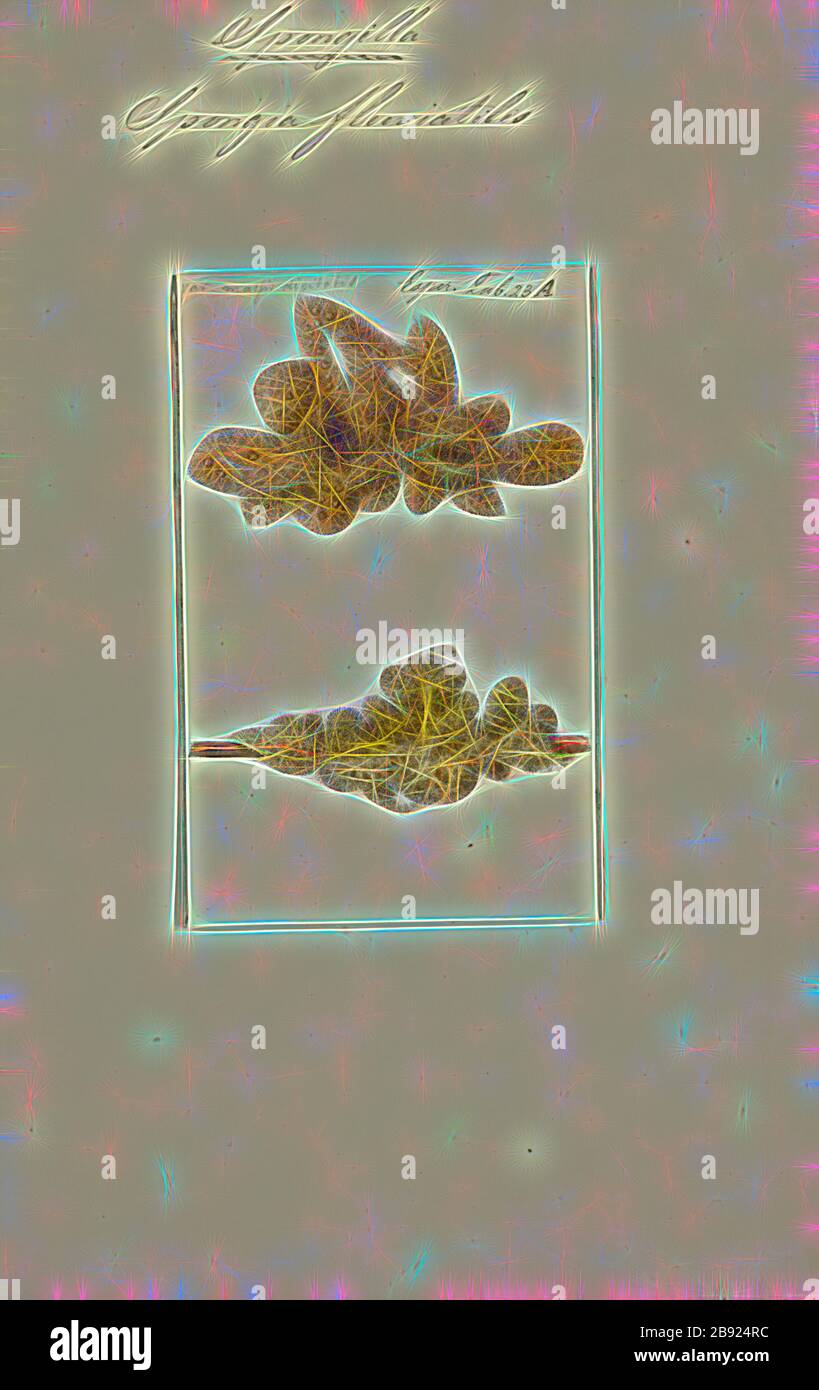 Spongia fluviatilis, Print, Spongia lamella in the Mediterranean Sea. Spongia is a genus of marine sponges in the family Spongiidae, originally described by Linnaeus in 1759, containing more than 50 species. Some species, including Spongia officinalis, are used as cleaning tools, but have mostly been replaced in that use by synthetic or plant material., Reimagined by Gibon, design of warm cheerful glowing of brightness and light rays radiance. Classic art reinvented with a modern twist. Photography inspired by futurism, embracing dynamic energy of modern technology, movement, speed and revolut Stock Photohttps://www.alamy.com/image-license-details/?v=1https://www.alamy.com/spongia-fluviatilis-print-spongia-lamella-in-the-mediterranean-sea-spongia-is-a-genus-of-marine-sponges-in-the-family-spongiidae-originally-described-by-linnaeus-in-1759-containing-more-than-50-species-some-species-including-spongia-officinalis-are-used-as-cleaning-tools-but-have-mostly-been-replaced-in-that-use-by-synthetic-or-plant-material-reimagined-by-gibon-design-of-warm-cheerful-glowing-of-brightness-and-light-rays-radiance-classic-art-reinvented-with-a-modern-twist-photography-inspired-by-futurism-embracing-dynamic-energy-of-modern-technology-movement-speed-and-revolut-image349786960.html
Spongia fluviatilis, Print, Spongia lamella in the Mediterranean Sea. Spongia is a genus of marine sponges in the family Spongiidae, originally described by Linnaeus in 1759, containing more than 50 species. Some species, including Spongia officinalis, are used as cleaning tools, but have mostly been replaced in that use by synthetic or plant material., Reimagined by Gibon, design of warm cheerful glowing of brightness and light rays radiance. Classic art reinvented with a modern twist. Photography inspired by futurism, embracing dynamic energy of modern technology, movement, speed and revolut Stock Photohttps://www.alamy.com/image-license-details/?v=1https://www.alamy.com/spongia-fluviatilis-print-spongia-lamella-in-the-mediterranean-sea-spongia-is-a-genus-of-marine-sponges-in-the-family-spongiidae-originally-described-by-linnaeus-in-1759-containing-more-than-50-species-some-species-including-spongia-officinalis-are-used-as-cleaning-tools-but-have-mostly-been-replaced-in-that-use-by-synthetic-or-plant-material-reimagined-by-gibon-design-of-warm-cheerful-glowing-of-brightness-and-light-rays-radiance-classic-art-reinvented-with-a-modern-twist-photography-inspired-by-futurism-embracing-dynamic-energy-of-modern-technology-movement-speed-and-revolut-image349786960.htmlRF2B924RC–Spongia fluviatilis, Print, Spongia lamella in the Mediterranean Sea. Spongia is a genus of marine sponges in the family Spongiidae, originally described by Linnaeus in 1759, containing more than 50 species. Some species, including Spongia officinalis, are used as cleaning tools, but have mostly been replaced in that use by synthetic or plant material., Reimagined by Gibon, design of warm cheerful glowing of brightness and light rays radiance. Classic art reinvented with a modern twist. Photography inspired by futurism, embracing dynamic energy of modern technology, movement, speed and revolut
![An encyclopædia of agriculture [electronic An encyclopædia of agriculture [electronic resource] : comprising the theory and practice of the valuation, transfer, laying out, improvement, and management of landed property, and the cultivation and economy of the animal and vegetable productions of agriculture, including all the latest improvements, a general history of agriculture in all countries, and a statistical view of its present state, with suggestions for its future progress in the British Isles encyclopdiaofa01loud Year: 1831 Book I. INTERNAL STRUCTURE OF PLANTS. so that, in the revolut Stock Photo An encyclopædia of agriculture [electronic An encyclopædia of agriculture [electronic resource] : comprising the theory and practice of the valuation, transfer, laying out, improvement, and management of landed property, and the cultivation and economy of the animal and vegetable productions of agriculture, including all the latest improvements, a general history of agriculture in all countries, and a statistical view of its present state, with suggestions for its future progress in the British Isles encyclopdiaofa01loud Year: 1831 Book I. INTERNAL STRUCTURE OF PLANTS. so that, in the revolut Stock Photo](https://c8.alamy.com/comp/RWT9RN/an-encyclopdia-of-agriculture-electronic-an-encyclopdia-of-agriculture-electronic-resource-comprising-the-theory-and-practice-of-the-valuation-transfer-laying-out-improvement-and-management-of-landed-property-and-the-cultivation-and-economy-of-the-animal-and-vegetable-productions-of-agriculture-including-all-the-latest-improvements-a-general-history-of-agriculture-in-all-countries-and-a-statistical-view-of-its-present-state-with-suggestions-for-its-future-progress-in-the-british-isles-encyclopdiaofa01loud-year-1831-book-i-internal-structure-of-plants-so-that-in-the-revolut-RWT9RN.jpg) An encyclopædia of agriculture [electronic An encyclopædia of agriculture [electronic resource] : comprising the theory and practice of the valuation, transfer, laying out, improvement, and management of landed property, and the cultivation and economy of the animal and vegetable productions of agriculture, including all the latest improvements, a general history of agriculture in all countries, and a statistical view of its present state, with suggestions for its future progress in the British Isles encyclopdiaofa01loud Year: 1831 Book I. INTERNAL STRUCTURE OF PLANTS. so that, in the revolut Stock Photohttps://www.alamy.com/image-license-details/?v=1https://www.alamy.com/an-encyclopdia-of-agriculture-electronic-an-encyclopdia-of-agriculture-electronic-resource-comprising-the-theory-and-practice-of-the-valuation-transfer-laying-out-improvement-and-management-of-landed-property-and-the-cultivation-and-economy-of-the-animal-and-vegetable-productions-of-agriculture-including-all-the-latest-improvements-a-general-history-of-agriculture-in-all-countries-and-a-statistical-view-of-its-present-state-with-suggestions-for-its-future-progress-in-the-british-isles-encyclopdiaofa01loud-year-1831-book-i-internal-structure-of-plants-so-that-in-the-revolut-image239635753.html
An encyclopædia of agriculture [electronic An encyclopædia of agriculture [electronic resource] : comprising the theory and practice of the valuation, transfer, laying out, improvement, and management of landed property, and the cultivation and economy of the animal and vegetable productions of agriculture, including all the latest improvements, a general history of agriculture in all countries, and a statistical view of its present state, with suggestions for its future progress in the British Isles encyclopdiaofa01loud Year: 1831 Book I. INTERNAL STRUCTURE OF PLANTS. so that, in the revolut Stock Photohttps://www.alamy.com/image-license-details/?v=1https://www.alamy.com/an-encyclopdia-of-agriculture-electronic-an-encyclopdia-of-agriculture-electronic-resource-comprising-the-theory-and-practice-of-the-valuation-transfer-laying-out-improvement-and-management-of-landed-property-and-the-cultivation-and-economy-of-the-animal-and-vegetable-productions-of-agriculture-including-all-the-latest-improvements-a-general-history-of-agriculture-in-all-countries-and-a-statistical-view-of-its-present-state-with-suggestions-for-its-future-progress-in-the-british-isles-encyclopdiaofa01loud-year-1831-book-i-internal-structure-of-plants-so-that-in-the-revolut-image239635753.htmlRMRWT9RN–An encyclopædia of agriculture [electronic An encyclopædia of agriculture [electronic resource] : comprising the theory and practice of the valuation, transfer, laying out, improvement, and management of landed property, and the cultivation and economy of the animal and vegetable productions of agriculture, including all the latest improvements, a general history of agriculture in all countries, and a statistical view of its present state, with suggestions for its future progress in the British Isles encyclopdiaofa01loud Year: 1831 Book I. INTERNAL STRUCTURE OF PLANTS. so that, in the revolut
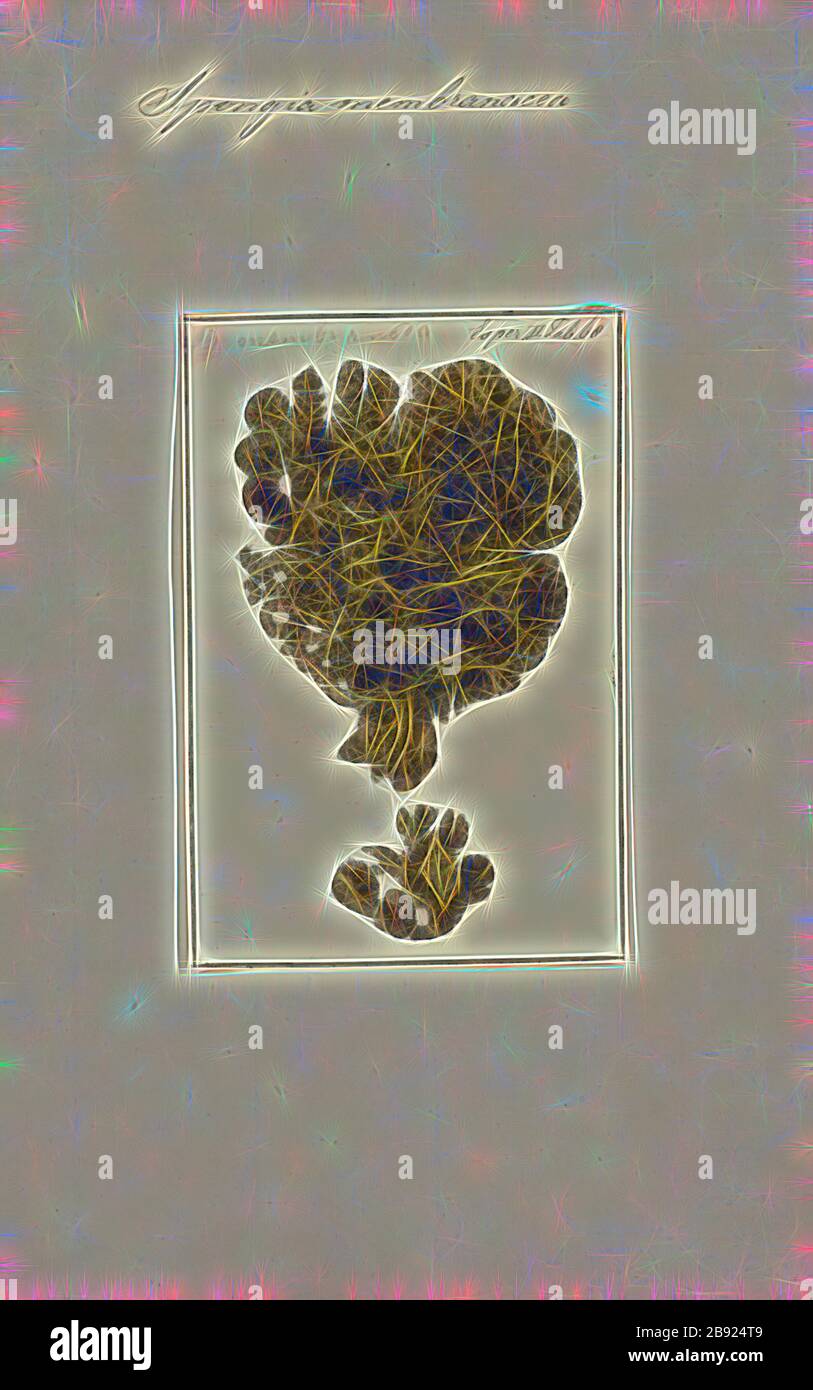 Spongia membranacea, Print, Spongia lamella in the Mediterranean Sea. Spongia is a genus of marine sponges in the family Spongiidae, originally described by Linnaeus in 1759, containing more than 50 species. Some species, including Spongia officinalis, are used as cleaning tools, but have mostly been replaced in that use by synthetic or plant material., Reimagined by Gibon, design of warm cheerful glowing of brightness and light rays radiance. Classic art reinvented with a modern twist. Photography inspired by futurism, embracing dynamic energy of modern technology, movement, speed and revolut Stock Photohttps://www.alamy.com/image-license-details/?v=1https://www.alamy.com/spongia-membranacea-print-spongia-lamella-in-the-mediterranean-sea-spongia-is-a-genus-of-marine-sponges-in-the-family-spongiidae-originally-described-by-linnaeus-in-1759-containing-more-than-50-species-some-species-including-spongia-officinalis-are-used-as-cleaning-tools-but-have-mostly-been-replaced-in-that-use-by-synthetic-or-plant-material-reimagined-by-gibon-design-of-warm-cheerful-glowing-of-brightness-and-light-rays-radiance-classic-art-reinvented-with-a-modern-twist-photography-inspired-by-futurism-embracing-dynamic-energy-of-modern-technology-movement-speed-and-revolut-image349786985.html
Spongia membranacea, Print, Spongia lamella in the Mediterranean Sea. Spongia is a genus of marine sponges in the family Spongiidae, originally described by Linnaeus in 1759, containing more than 50 species. Some species, including Spongia officinalis, are used as cleaning tools, but have mostly been replaced in that use by synthetic or plant material., Reimagined by Gibon, design of warm cheerful glowing of brightness and light rays radiance. Classic art reinvented with a modern twist. Photography inspired by futurism, embracing dynamic energy of modern technology, movement, speed and revolut Stock Photohttps://www.alamy.com/image-license-details/?v=1https://www.alamy.com/spongia-membranacea-print-spongia-lamella-in-the-mediterranean-sea-spongia-is-a-genus-of-marine-sponges-in-the-family-spongiidae-originally-described-by-linnaeus-in-1759-containing-more-than-50-species-some-species-including-spongia-officinalis-are-used-as-cleaning-tools-but-have-mostly-been-replaced-in-that-use-by-synthetic-or-plant-material-reimagined-by-gibon-design-of-warm-cheerful-glowing-of-brightness-and-light-rays-radiance-classic-art-reinvented-with-a-modern-twist-photography-inspired-by-futurism-embracing-dynamic-energy-of-modern-technology-movement-speed-and-revolut-image349786985.htmlRF2B924T9–Spongia membranacea, Print, Spongia lamella in the Mediterranean Sea. Spongia is a genus of marine sponges in the family Spongiidae, originally described by Linnaeus in 1759, containing more than 50 species. Some species, including Spongia officinalis, are used as cleaning tools, but have mostly been replaced in that use by synthetic or plant material., Reimagined by Gibon, design of warm cheerful glowing of brightness and light rays radiance. Classic art reinvented with a modern twist. Photography inspired by futurism, embracing dynamic energy of modern technology, movement, speed and revolut
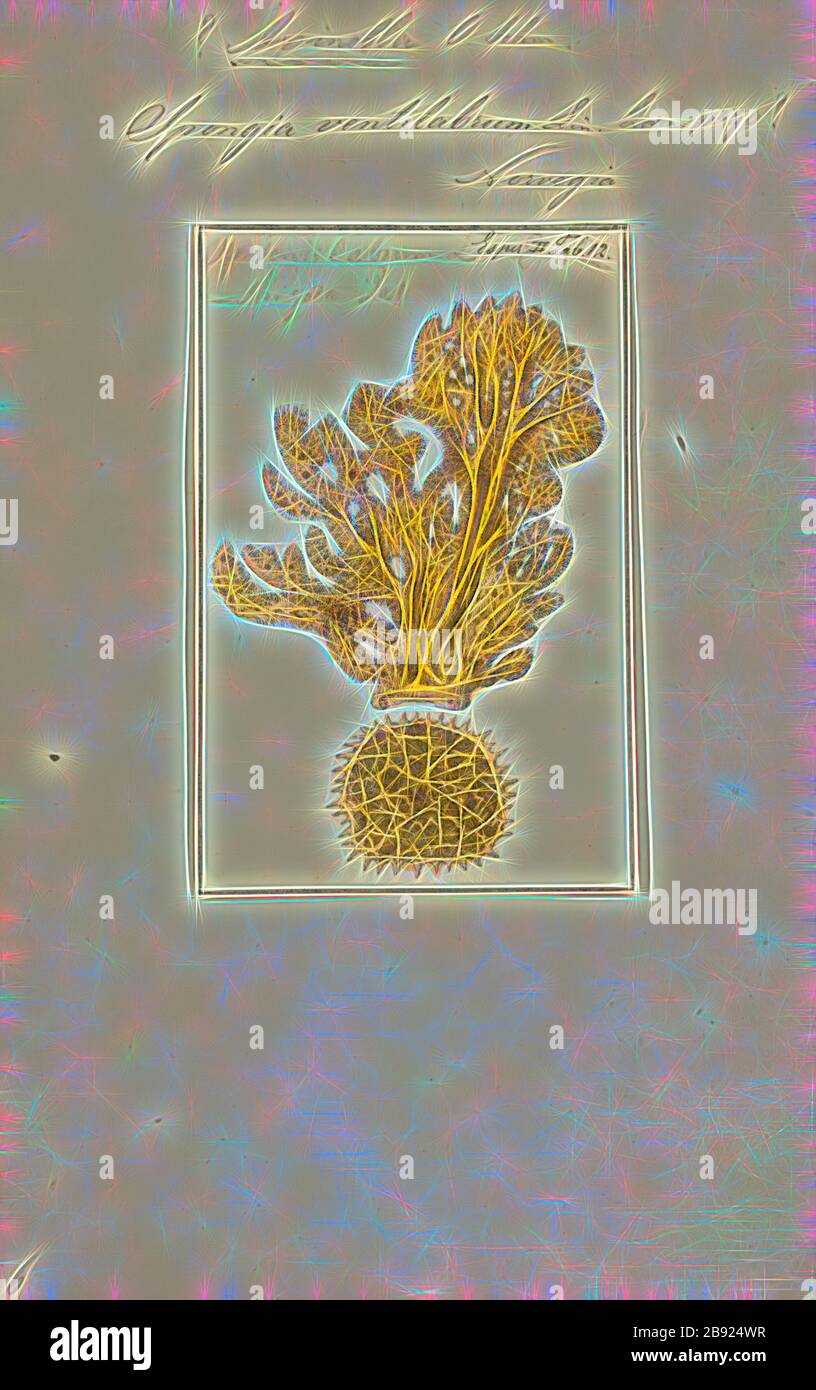 Spongia ventilabrum, Print, Spongia lamella in the Mediterranean Sea. Spongia is a genus of marine sponges in the family Spongiidae, originally described by Linnaeus in 1759, containing more than 50 species. Some species, including Spongia officinalis, are used as cleaning tools, but have mostly been replaced in that use by synthetic or plant material., Reimagined by Gibon, design of warm cheerful glowing of brightness and light rays radiance. Classic art reinvented with a modern twist. Photography inspired by futurism, embracing dynamic energy of modern technology, movement, speed and revolut Stock Photohttps://www.alamy.com/image-license-details/?v=1https://www.alamy.com/spongia-ventilabrum-print-spongia-lamella-in-the-mediterranean-sea-spongia-is-a-genus-of-marine-sponges-in-the-family-spongiidae-originally-described-by-linnaeus-in-1759-containing-more-than-50-species-some-species-including-spongia-officinalis-are-used-as-cleaning-tools-but-have-mostly-been-replaced-in-that-use-by-synthetic-or-plant-material-reimagined-by-gibon-design-of-warm-cheerful-glowing-of-brightness-and-light-rays-radiance-classic-art-reinvented-with-a-modern-twist-photography-inspired-by-futurism-embracing-dynamic-energy-of-modern-technology-movement-speed-and-revolut-image349787027.html
Spongia ventilabrum, Print, Spongia lamella in the Mediterranean Sea. Spongia is a genus of marine sponges in the family Spongiidae, originally described by Linnaeus in 1759, containing more than 50 species. Some species, including Spongia officinalis, are used as cleaning tools, but have mostly been replaced in that use by synthetic or plant material., Reimagined by Gibon, design of warm cheerful glowing of brightness and light rays radiance. Classic art reinvented with a modern twist. Photography inspired by futurism, embracing dynamic energy of modern technology, movement, speed and revolut Stock Photohttps://www.alamy.com/image-license-details/?v=1https://www.alamy.com/spongia-ventilabrum-print-spongia-lamella-in-the-mediterranean-sea-spongia-is-a-genus-of-marine-sponges-in-the-family-spongiidae-originally-described-by-linnaeus-in-1759-containing-more-than-50-species-some-species-including-spongia-officinalis-are-used-as-cleaning-tools-but-have-mostly-been-replaced-in-that-use-by-synthetic-or-plant-material-reimagined-by-gibon-design-of-warm-cheerful-glowing-of-brightness-and-light-rays-radiance-classic-art-reinvented-with-a-modern-twist-photography-inspired-by-futurism-embracing-dynamic-energy-of-modern-technology-movement-speed-and-revolut-image349787027.htmlRF2B924WR–Spongia ventilabrum, Print, Spongia lamella in the Mediterranean Sea. Spongia is a genus of marine sponges in the family Spongiidae, originally described by Linnaeus in 1759, containing more than 50 species. Some species, including Spongia officinalis, are used as cleaning tools, but have mostly been replaced in that use by synthetic or plant material., Reimagined by Gibon, design of warm cheerful glowing of brightness and light rays radiance. Classic art reinvented with a modern twist. Photography inspired by futurism, embracing dynamic energy of modern technology, movement, speed and revolut
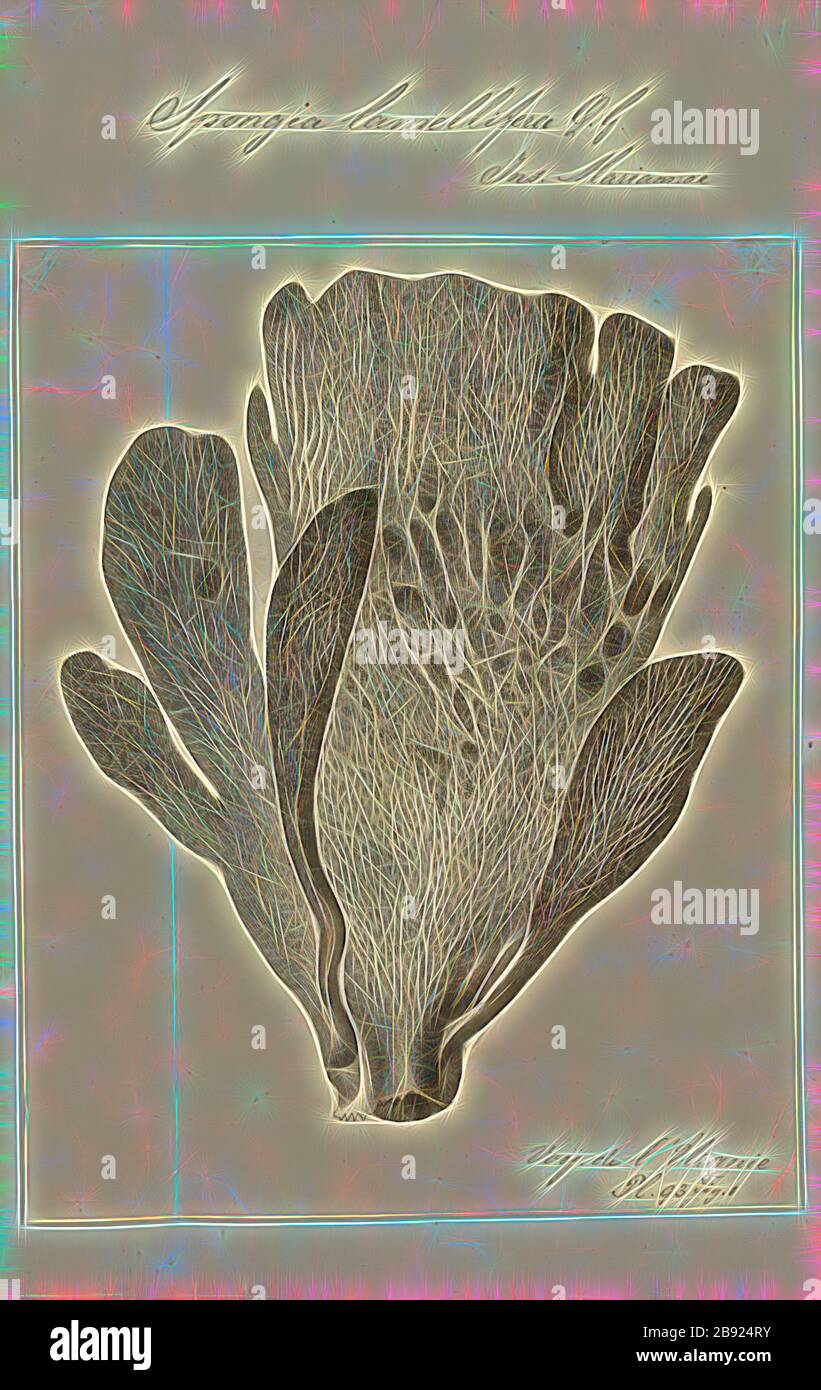 Spongia lamellifera, Print, Spongia lamella in the Mediterranean Sea. Spongia is a genus of marine sponges in the family Spongiidae, originally described by Linnaeus in 1759, containing more than 50 species. Some species, including Spongia officinalis, are used as cleaning tools, but have mostly been replaced in that use by synthetic or plant material., Reimagined by Gibon, design of warm cheerful glowing of brightness and light rays radiance. Classic art reinvented with a modern twist. Photography inspired by futurism, embracing dynamic energy of modern technology, movement, speed and revolut Stock Photohttps://www.alamy.com/image-license-details/?v=1https://www.alamy.com/spongia-lamellifera-print-spongia-lamella-in-the-mediterranean-sea-spongia-is-a-genus-of-marine-sponges-in-the-family-spongiidae-originally-described-by-linnaeus-in-1759-containing-more-than-50-species-some-species-including-spongia-officinalis-are-used-as-cleaning-tools-but-have-mostly-been-replaced-in-that-use-by-synthetic-or-plant-material-reimagined-by-gibon-design-of-warm-cheerful-glowing-of-brightness-and-light-rays-radiance-classic-art-reinvented-with-a-modern-twist-photography-inspired-by-futurism-embracing-dynamic-energy-of-modern-technology-movement-speed-and-revolut-image349786975.html
Spongia lamellifera, Print, Spongia lamella in the Mediterranean Sea. Spongia is a genus of marine sponges in the family Spongiidae, originally described by Linnaeus in 1759, containing more than 50 species. Some species, including Spongia officinalis, are used as cleaning tools, but have mostly been replaced in that use by synthetic or plant material., Reimagined by Gibon, design of warm cheerful glowing of brightness and light rays radiance. Classic art reinvented with a modern twist. Photography inspired by futurism, embracing dynamic energy of modern technology, movement, speed and revolut Stock Photohttps://www.alamy.com/image-license-details/?v=1https://www.alamy.com/spongia-lamellifera-print-spongia-lamella-in-the-mediterranean-sea-spongia-is-a-genus-of-marine-sponges-in-the-family-spongiidae-originally-described-by-linnaeus-in-1759-containing-more-than-50-species-some-species-including-spongia-officinalis-are-used-as-cleaning-tools-but-have-mostly-been-replaced-in-that-use-by-synthetic-or-plant-material-reimagined-by-gibon-design-of-warm-cheerful-glowing-of-brightness-and-light-rays-radiance-classic-art-reinvented-with-a-modern-twist-photography-inspired-by-futurism-embracing-dynamic-energy-of-modern-technology-movement-speed-and-revolut-image349786975.htmlRF2B924RY–Spongia lamellifera, Print, Spongia lamella in the Mediterranean Sea. Spongia is a genus of marine sponges in the family Spongiidae, originally described by Linnaeus in 1759, containing more than 50 species. Some species, including Spongia officinalis, are used as cleaning tools, but have mostly been replaced in that use by synthetic or plant material., Reimagined by Gibon, design of warm cheerful glowing of brightness and light rays radiance. Classic art reinvented with a modern twist. Photography inspired by futurism, embracing dynamic energy of modern technology, movement, speed and revolut
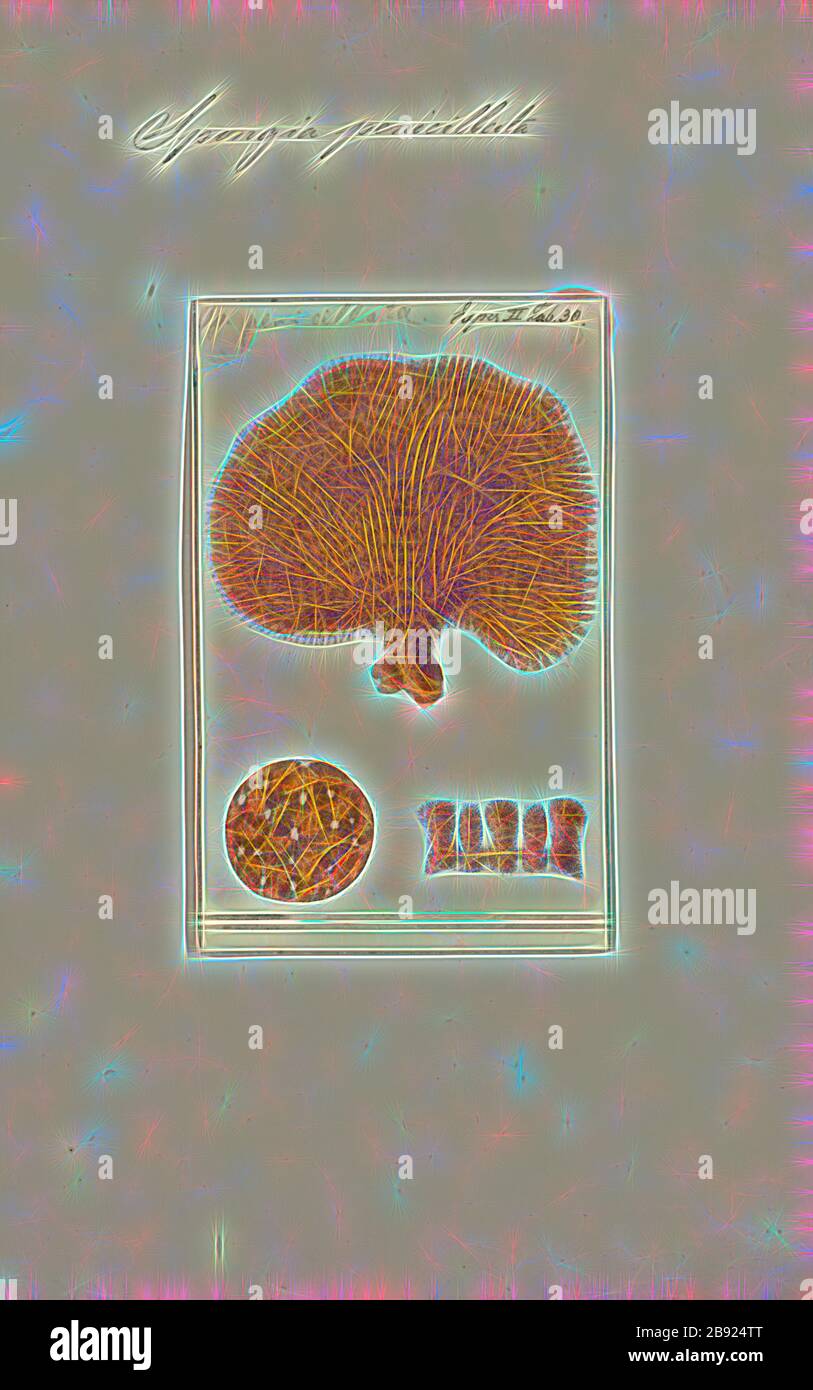 Spongia penicillata, Print, Spongia lamella in the Mediterranean Sea. Spongia is a genus of marine sponges in the family Spongiidae, originally described by Linnaeus in 1759, containing more than 50 species. Some species, including Spongia officinalis, are used as cleaning tools, but have mostly been replaced in that use by synthetic or plant material., Reimagined by Gibon, design of warm cheerful glowing of brightness and light rays radiance. Classic art reinvented with a modern twist. Photography inspired by futurism, embracing dynamic energy of modern technology, movement, speed and revolut Stock Photohttps://www.alamy.com/image-license-details/?v=1https://www.alamy.com/spongia-penicillata-print-spongia-lamella-in-the-mediterranean-sea-spongia-is-a-genus-of-marine-sponges-in-the-family-spongiidae-originally-described-by-linnaeus-in-1759-containing-more-than-50-species-some-species-including-spongia-officinalis-are-used-as-cleaning-tools-but-have-mostly-been-replaced-in-that-use-by-synthetic-or-plant-material-reimagined-by-gibon-design-of-warm-cheerful-glowing-of-brightness-and-light-rays-radiance-classic-art-reinvented-with-a-modern-twist-photography-inspired-by-futurism-embracing-dynamic-energy-of-modern-technology-movement-speed-and-revolut-image349787000.html
Spongia penicillata, Print, Spongia lamella in the Mediterranean Sea. Spongia is a genus of marine sponges in the family Spongiidae, originally described by Linnaeus in 1759, containing more than 50 species. Some species, including Spongia officinalis, are used as cleaning tools, but have mostly been replaced in that use by synthetic or plant material., Reimagined by Gibon, design of warm cheerful glowing of brightness and light rays radiance. Classic art reinvented with a modern twist. Photography inspired by futurism, embracing dynamic energy of modern technology, movement, speed and revolut Stock Photohttps://www.alamy.com/image-license-details/?v=1https://www.alamy.com/spongia-penicillata-print-spongia-lamella-in-the-mediterranean-sea-spongia-is-a-genus-of-marine-sponges-in-the-family-spongiidae-originally-described-by-linnaeus-in-1759-containing-more-than-50-species-some-species-including-spongia-officinalis-are-used-as-cleaning-tools-but-have-mostly-been-replaced-in-that-use-by-synthetic-or-plant-material-reimagined-by-gibon-design-of-warm-cheerful-glowing-of-brightness-and-light-rays-radiance-classic-art-reinvented-with-a-modern-twist-photography-inspired-by-futurism-embracing-dynamic-energy-of-modern-technology-movement-speed-and-revolut-image349787000.htmlRF2B924TT–Spongia penicillata, Print, Spongia lamella in the Mediterranean Sea. Spongia is a genus of marine sponges in the family Spongiidae, originally described by Linnaeus in 1759, containing more than 50 species. Some species, including Spongia officinalis, are used as cleaning tools, but have mostly been replaced in that use by synthetic or plant material., Reimagined by Gibon, design of warm cheerful glowing of brightness and light rays radiance. Classic art reinvented with a modern twist. Photography inspired by futurism, embracing dynamic energy of modern technology, movement, speed and revolut
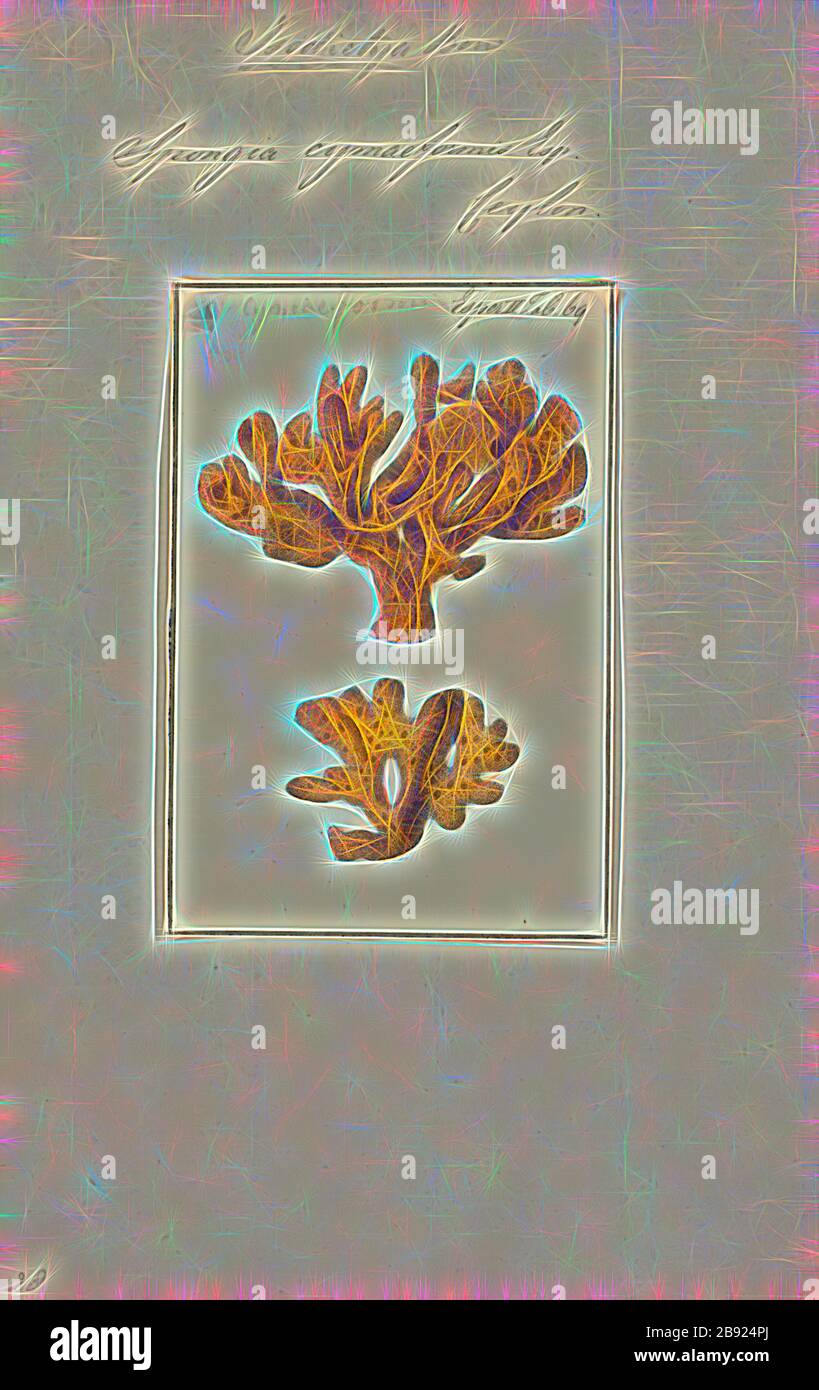 Spongia cymaeformis, Print, Spongia lamella in the Mediterranean Sea. Spongia is a genus of marine sponges in the family Spongiidae, originally described by Linnaeus in 1759, containing more than 50 species. Some species, including Spongia officinalis, are used as cleaning tools, but have mostly been replaced in that use by synthetic or plant material., Reimagined by Gibon, design of warm cheerful glowing of brightness and light rays radiance. Classic art reinvented with a modern twist. Photography inspired by futurism, embracing dynamic energy of modern technology, movement, speed and revolut Stock Photohttps://www.alamy.com/image-license-details/?v=1https://www.alamy.com/spongia-cymaeformis-print-spongia-lamella-in-the-mediterranean-sea-spongia-is-a-genus-of-marine-sponges-in-the-family-spongiidae-originally-described-by-linnaeus-in-1759-containing-more-than-50-species-some-species-including-spongia-officinalis-are-used-as-cleaning-tools-but-have-mostly-been-replaced-in-that-use-by-synthetic-or-plant-material-reimagined-by-gibon-design-of-warm-cheerful-glowing-of-brightness-and-light-rays-radiance-classic-art-reinvented-with-a-modern-twist-photography-inspired-by-futurism-embracing-dynamic-energy-of-modern-technology-movement-speed-and-revolut-image349786938.html
Spongia cymaeformis, Print, Spongia lamella in the Mediterranean Sea. Spongia is a genus of marine sponges in the family Spongiidae, originally described by Linnaeus in 1759, containing more than 50 species. Some species, including Spongia officinalis, are used as cleaning tools, but have mostly been replaced in that use by synthetic or plant material., Reimagined by Gibon, design of warm cheerful glowing of brightness and light rays radiance. Classic art reinvented with a modern twist. Photography inspired by futurism, embracing dynamic energy of modern technology, movement, speed and revolut Stock Photohttps://www.alamy.com/image-license-details/?v=1https://www.alamy.com/spongia-cymaeformis-print-spongia-lamella-in-the-mediterranean-sea-spongia-is-a-genus-of-marine-sponges-in-the-family-spongiidae-originally-described-by-linnaeus-in-1759-containing-more-than-50-species-some-species-including-spongia-officinalis-are-used-as-cleaning-tools-but-have-mostly-been-replaced-in-that-use-by-synthetic-or-plant-material-reimagined-by-gibon-design-of-warm-cheerful-glowing-of-brightness-and-light-rays-radiance-classic-art-reinvented-with-a-modern-twist-photography-inspired-by-futurism-embracing-dynamic-energy-of-modern-technology-movement-speed-and-revolut-image349786938.htmlRF2B924PJ–Spongia cymaeformis, Print, Spongia lamella in the Mediterranean Sea. Spongia is a genus of marine sponges in the family Spongiidae, originally described by Linnaeus in 1759, containing more than 50 species. Some species, including Spongia officinalis, are used as cleaning tools, but have mostly been replaced in that use by synthetic or plant material., Reimagined by Gibon, design of warm cheerful glowing of brightness and light rays radiance. Classic art reinvented with a modern twist. Photography inspired by futurism, embracing dynamic energy of modern technology, movement, speed and revolut
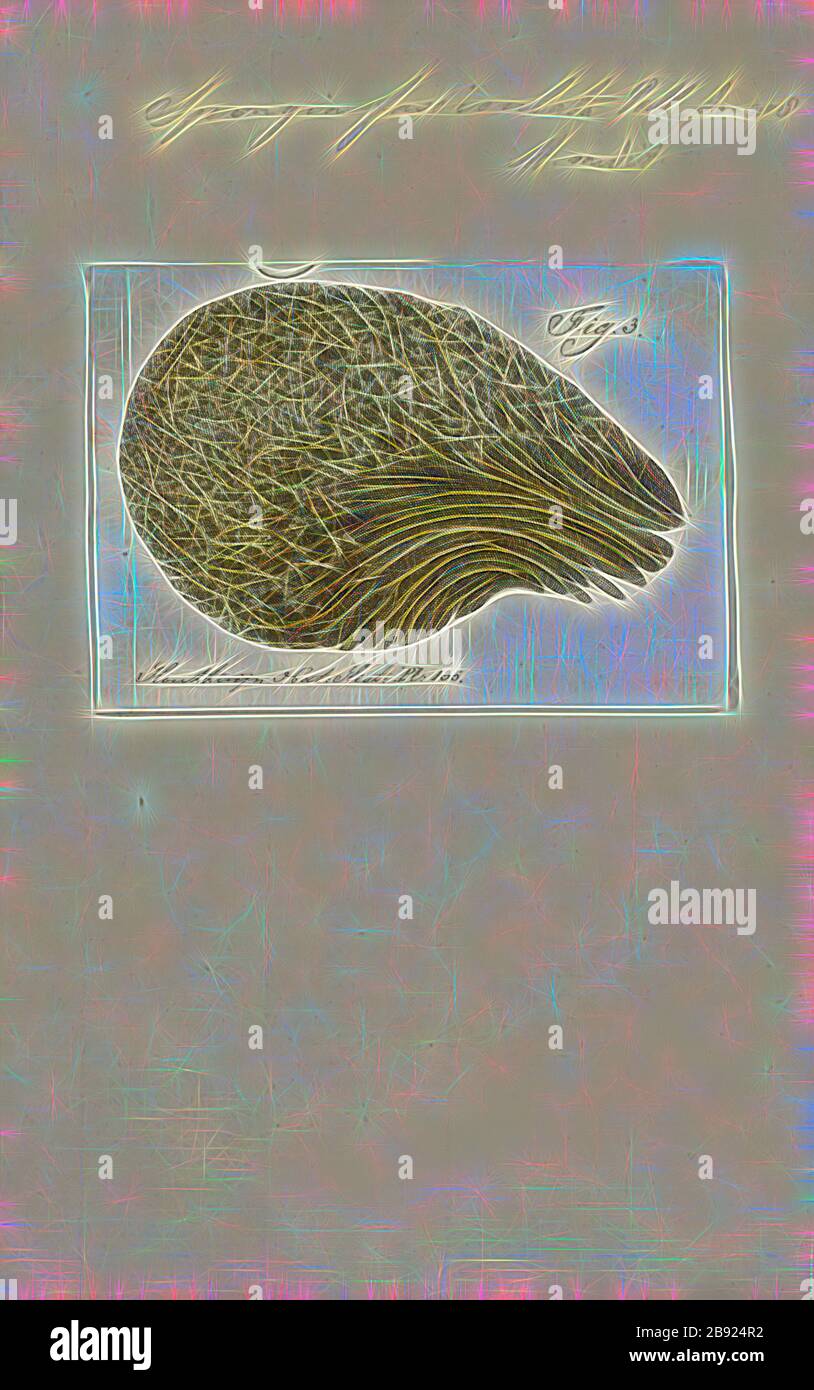 Spongia fasciculata, Print, Spongia lamella in the Mediterranean Sea. Spongia is a genus of marine sponges in the family Spongiidae, originally described by Linnaeus in 1759, containing more than 50 species. Some species, including Spongia officinalis, are used as cleaning tools, but have mostly been replaced in that use by synthetic or plant material., Reimagined by Gibon, design of warm cheerful glowing of brightness and light rays radiance. Classic art reinvented with a modern twist. Photography inspired by futurism, embracing dynamic energy of modern technology, movement, speed and revolut Stock Photohttps://www.alamy.com/image-license-details/?v=1https://www.alamy.com/spongia-fasciculata-print-spongia-lamella-in-the-mediterranean-sea-spongia-is-a-genus-of-marine-sponges-in-the-family-spongiidae-originally-described-by-linnaeus-in-1759-containing-more-than-50-species-some-species-including-spongia-officinalis-are-used-as-cleaning-tools-but-have-mostly-been-replaced-in-that-use-by-synthetic-or-plant-material-reimagined-by-gibon-design-of-warm-cheerful-glowing-of-brightness-and-light-rays-radiance-classic-art-reinvented-with-a-modern-twist-photography-inspired-by-futurism-embracing-dynamic-energy-of-modern-technology-movement-speed-and-revolut-image349786950.html
Spongia fasciculata, Print, Spongia lamella in the Mediterranean Sea. Spongia is a genus of marine sponges in the family Spongiidae, originally described by Linnaeus in 1759, containing more than 50 species. Some species, including Spongia officinalis, are used as cleaning tools, but have mostly been replaced in that use by synthetic or plant material., Reimagined by Gibon, design of warm cheerful glowing of brightness and light rays radiance. Classic art reinvented with a modern twist. Photography inspired by futurism, embracing dynamic energy of modern technology, movement, speed and revolut Stock Photohttps://www.alamy.com/image-license-details/?v=1https://www.alamy.com/spongia-fasciculata-print-spongia-lamella-in-the-mediterranean-sea-spongia-is-a-genus-of-marine-sponges-in-the-family-spongiidae-originally-described-by-linnaeus-in-1759-containing-more-than-50-species-some-species-including-spongia-officinalis-are-used-as-cleaning-tools-but-have-mostly-been-replaced-in-that-use-by-synthetic-or-plant-material-reimagined-by-gibon-design-of-warm-cheerful-glowing-of-brightness-and-light-rays-radiance-classic-art-reinvented-with-a-modern-twist-photography-inspired-by-futurism-embracing-dynamic-energy-of-modern-technology-movement-speed-and-revolut-image349786950.htmlRF2B924R2–Spongia fasciculata, Print, Spongia lamella in the Mediterranean Sea. Spongia is a genus of marine sponges in the family Spongiidae, originally described by Linnaeus in 1759, containing more than 50 species. Some species, including Spongia officinalis, are used as cleaning tools, but have mostly been replaced in that use by synthetic or plant material., Reimagined by Gibon, design of warm cheerful glowing of brightness and light rays radiance. Classic art reinvented with a modern twist. Photography inspired by futurism, embracing dynamic energy of modern technology, movement, speed and revolut
 Spongia tubaeformis, Print, Spongia lamella in the Mediterranean Sea. Spongia is a genus of marine sponges in the family Spongiidae, originally described by Linnaeus in 1759, containing more than 50 species. Some species, including Spongia officinalis, are used as cleaning tools, but have mostly been replaced in that use by synthetic or plant material., Reimagined by Gibon, design of warm cheerful glowing of brightness and light rays radiance. Classic art reinvented with a modern twist. Photography inspired by futurism, embracing dynamic energy of modern technology, movement, speed and revolut Stock Photohttps://www.alamy.com/image-license-details/?v=1https://www.alamy.com/spongia-tubaeformis-print-spongia-lamella-in-the-mediterranean-sea-spongia-is-a-genus-of-marine-sponges-in-the-family-spongiidae-originally-described-by-linnaeus-in-1759-containing-more-than-50-species-some-species-including-spongia-officinalis-are-used-as-cleaning-tools-but-have-mostly-been-replaced-in-that-use-by-synthetic-or-plant-material-reimagined-by-gibon-design-of-warm-cheerful-glowing-of-brightness-and-light-rays-radiance-classic-art-reinvented-with-a-modern-twist-photography-inspired-by-futurism-embracing-dynamic-energy-of-modern-technology-movement-speed-and-revolut-image349787016.html
Spongia tubaeformis, Print, Spongia lamella in the Mediterranean Sea. Spongia is a genus of marine sponges in the family Spongiidae, originally described by Linnaeus in 1759, containing more than 50 species. Some species, including Spongia officinalis, are used as cleaning tools, but have mostly been replaced in that use by synthetic or plant material., Reimagined by Gibon, design of warm cheerful glowing of brightness and light rays radiance. Classic art reinvented with a modern twist. Photography inspired by futurism, embracing dynamic energy of modern technology, movement, speed and revolut Stock Photohttps://www.alamy.com/image-license-details/?v=1https://www.alamy.com/spongia-tubaeformis-print-spongia-lamella-in-the-mediterranean-sea-spongia-is-a-genus-of-marine-sponges-in-the-family-spongiidae-originally-described-by-linnaeus-in-1759-containing-more-than-50-species-some-species-including-spongia-officinalis-are-used-as-cleaning-tools-but-have-mostly-been-replaced-in-that-use-by-synthetic-or-plant-material-reimagined-by-gibon-design-of-warm-cheerful-glowing-of-brightness-and-light-rays-radiance-classic-art-reinvented-with-a-modern-twist-photography-inspired-by-futurism-embracing-dynamic-energy-of-modern-technology-movement-speed-and-revolut-image349787016.htmlRF2B924WC–Spongia tubaeformis, Print, Spongia lamella in the Mediterranean Sea. Spongia is a genus of marine sponges in the family Spongiidae, originally described by Linnaeus in 1759, containing more than 50 species. Some species, including Spongia officinalis, are used as cleaning tools, but have mostly been replaced in that use by synthetic or plant material., Reimagined by Gibon, design of warm cheerful glowing of brightness and light rays radiance. Classic art reinvented with a modern twist. Photography inspired by futurism, embracing dynamic energy of modern technology, movement, speed and revolut
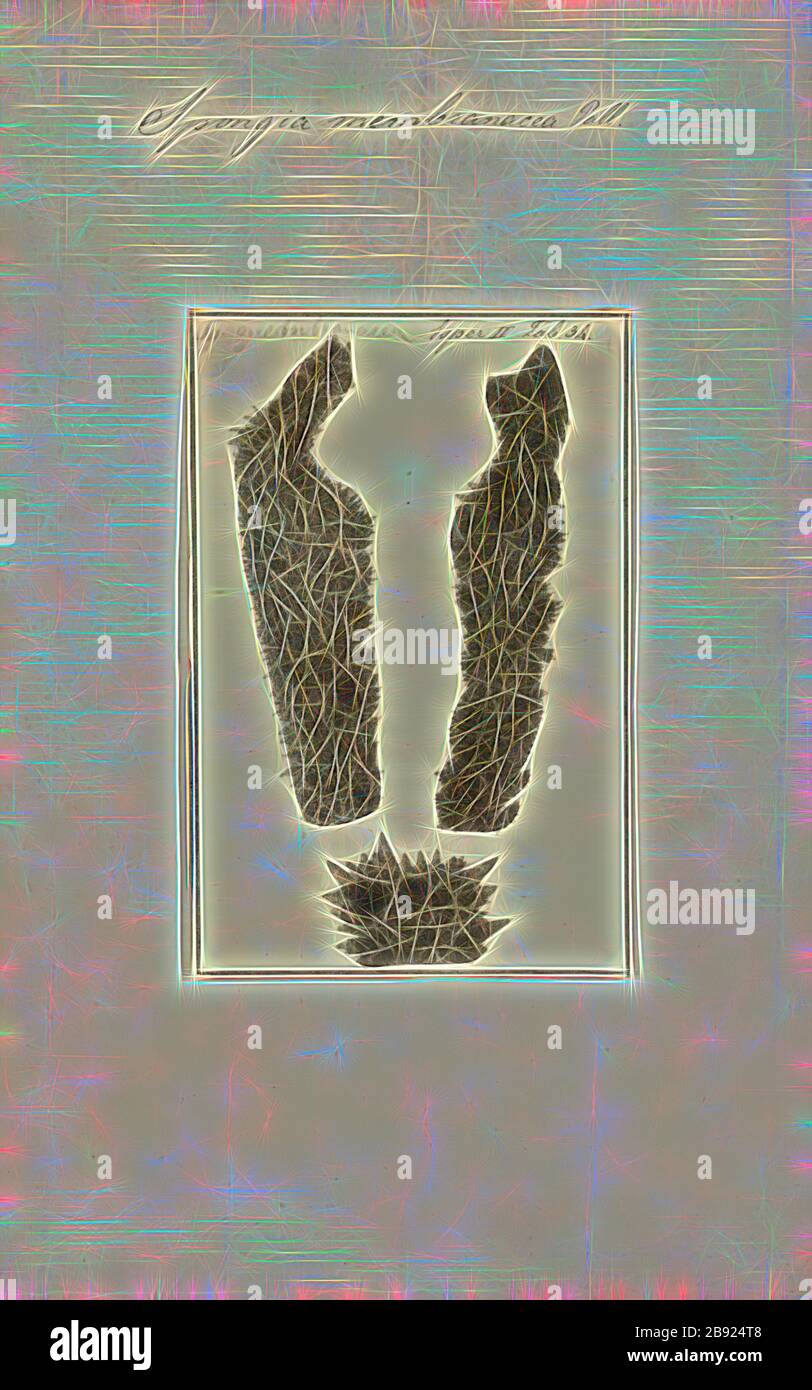 Spongia membranacea, Print, Spongia lamella in the Mediterranean Sea. Spongia is a genus of marine sponges in the family Spongiidae, originally described by Linnaeus in 1759, containing more than 50 species. Some species, including Spongia officinalis, are used as cleaning tools, but have mostly been replaced in that use by synthetic or plant material., Reimagined by Gibon, design of warm cheerful glowing of brightness and light rays radiance. Classic art reinvented with a modern twist. Photography inspired by futurism, embracing dynamic energy of modern technology, movement, speed and revolut Stock Photohttps://www.alamy.com/image-license-details/?v=1https://www.alamy.com/spongia-membranacea-print-spongia-lamella-in-the-mediterranean-sea-spongia-is-a-genus-of-marine-sponges-in-the-family-spongiidae-originally-described-by-linnaeus-in-1759-containing-more-than-50-species-some-species-including-spongia-officinalis-are-used-as-cleaning-tools-but-have-mostly-been-replaced-in-that-use-by-synthetic-or-plant-material-reimagined-by-gibon-design-of-warm-cheerful-glowing-of-brightness-and-light-rays-radiance-classic-art-reinvented-with-a-modern-twist-photography-inspired-by-futurism-embracing-dynamic-energy-of-modern-technology-movement-speed-and-revolut-image349786984.html
Spongia membranacea, Print, Spongia lamella in the Mediterranean Sea. Spongia is a genus of marine sponges in the family Spongiidae, originally described by Linnaeus in 1759, containing more than 50 species. Some species, including Spongia officinalis, are used as cleaning tools, but have mostly been replaced in that use by synthetic or plant material., Reimagined by Gibon, design of warm cheerful glowing of brightness and light rays radiance. Classic art reinvented with a modern twist. Photography inspired by futurism, embracing dynamic energy of modern technology, movement, speed and revolut Stock Photohttps://www.alamy.com/image-license-details/?v=1https://www.alamy.com/spongia-membranacea-print-spongia-lamella-in-the-mediterranean-sea-spongia-is-a-genus-of-marine-sponges-in-the-family-spongiidae-originally-described-by-linnaeus-in-1759-containing-more-than-50-species-some-species-including-spongia-officinalis-are-used-as-cleaning-tools-but-have-mostly-been-replaced-in-that-use-by-synthetic-or-plant-material-reimagined-by-gibon-design-of-warm-cheerful-glowing-of-brightness-and-light-rays-radiance-classic-art-reinvented-with-a-modern-twist-photography-inspired-by-futurism-embracing-dynamic-energy-of-modern-technology-movement-speed-and-revolut-image349786984.htmlRF2B924T8–Spongia membranacea, Print, Spongia lamella in the Mediterranean Sea. Spongia is a genus of marine sponges in the family Spongiidae, originally described by Linnaeus in 1759, containing more than 50 species. Some species, including Spongia officinalis, are used as cleaning tools, but have mostly been replaced in that use by synthetic or plant material., Reimagined by Gibon, design of warm cheerful glowing of brightness and light rays radiance. Classic art reinvented with a modern twist. Photography inspired by futurism, embracing dynamic energy of modern technology, movement, speed and revolut
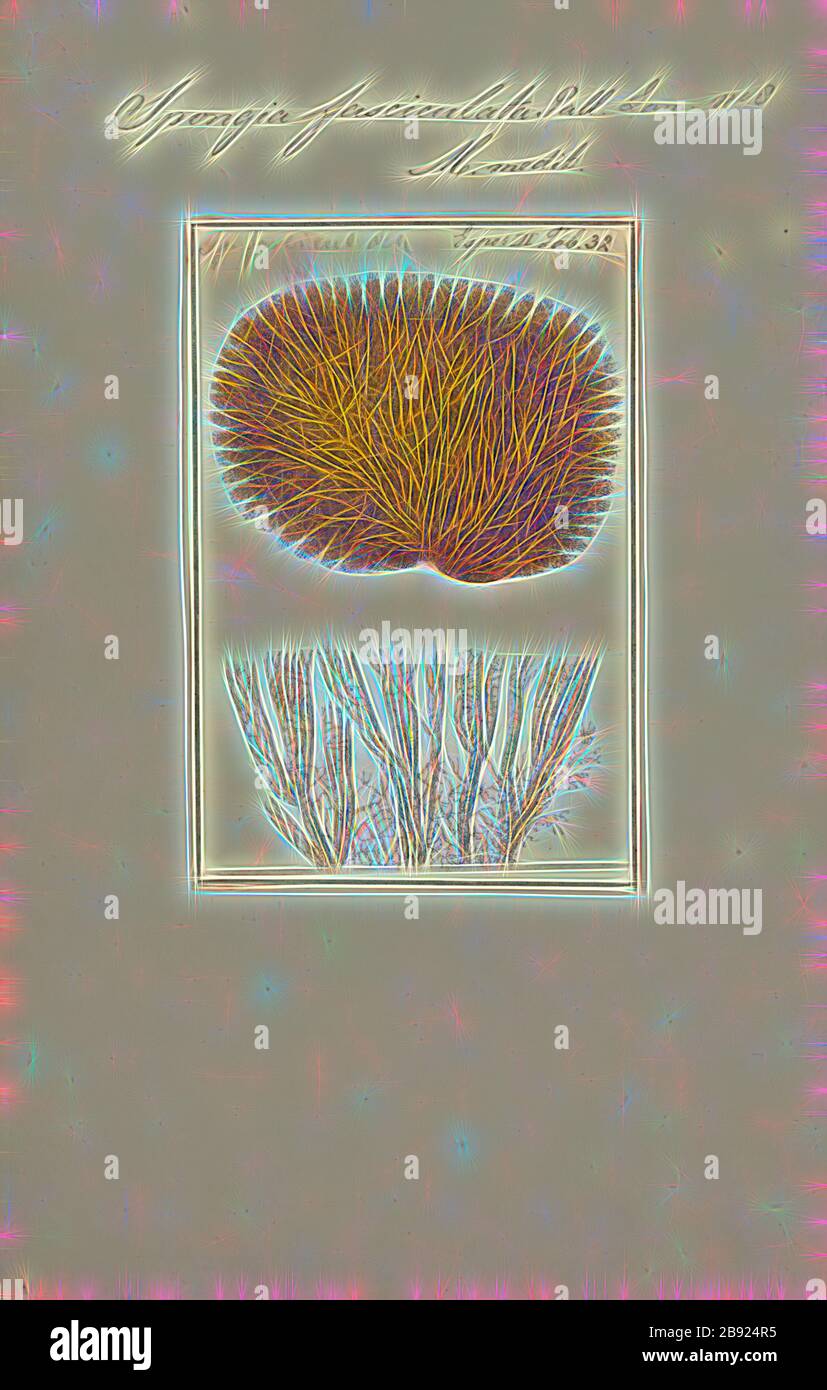 Spongia fasciculata, Print, Spongia lamella in the Mediterranean Sea. Spongia is a genus of marine sponges in the family Spongiidae, originally described by Linnaeus in 1759, containing more than 50 species. Some species, including Spongia officinalis, are used as cleaning tools, but have mostly been replaced in that use by synthetic or plant material., Reimagined by Gibon, design of warm cheerful glowing of brightness and light rays radiance. Classic art reinvented with a modern twist. Photography inspired by futurism, embracing dynamic energy of modern technology, movement, speed and revolut Stock Photohttps://www.alamy.com/image-license-details/?v=1https://www.alamy.com/spongia-fasciculata-print-spongia-lamella-in-the-mediterranean-sea-spongia-is-a-genus-of-marine-sponges-in-the-family-spongiidae-originally-described-by-linnaeus-in-1759-containing-more-than-50-species-some-species-including-spongia-officinalis-are-used-as-cleaning-tools-but-have-mostly-been-replaced-in-that-use-by-synthetic-or-plant-material-reimagined-by-gibon-design-of-warm-cheerful-glowing-of-brightness-and-light-rays-radiance-classic-art-reinvented-with-a-modern-twist-photography-inspired-by-futurism-embracing-dynamic-energy-of-modern-technology-movement-speed-and-revolut-image349786953.html
Spongia fasciculata, Print, Spongia lamella in the Mediterranean Sea. Spongia is a genus of marine sponges in the family Spongiidae, originally described by Linnaeus in 1759, containing more than 50 species. Some species, including Spongia officinalis, are used as cleaning tools, but have mostly been replaced in that use by synthetic or plant material., Reimagined by Gibon, design of warm cheerful glowing of brightness and light rays radiance. Classic art reinvented with a modern twist. Photography inspired by futurism, embracing dynamic energy of modern technology, movement, speed and revolut Stock Photohttps://www.alamy.com/image-license-details/?v=1https://www.alamy.com/spongia-fasciculata-print-spongia-lamella-in-the-mediterranean-sea-spongia-is-a-genus-of-marine-sponges-in-the-family-spongiidae-originally-described-by-linnaeus-in-1759-containing-more-than-50-species-some-species-including-spongia-officinalis-are-used-as-cleaning-tools-but-have-mostly-been-replaced-in-that-use-by-synthetic-or-plant-material-reimagined-by-gibon-design-of-warm-cheerful-glowing-of-brightness-and-light-rays-radiance-classic-art-reinvented-with-a-modern-twist-photography-inspired-by-futurism-embracing-dynamic-energy-of-modern-technology-movement-speed-and-revolut-image349786953.htmlRF2B924R5–Spongia fasciculata, Print, Spongia lamella in the Mediterranean Sea. Spongia is a genus of marine sponges in the family Spongiidae, originally described by Linnaeus in 1759, containing more than 50 species. Some species, including Spongia officinalis, are used as cleaning tools, but have mostly been replaced in that use by synthetic or plant material., Reimagined by Gibon, design of warm cheerful glowing of brightness and light rays radiance. Classic art reinvented with a modern twist. Photography inspired by futurism, embracing dynamic energy of modern technology, movement, speed and revolut
 Aramides saracura, Print, The slaty-breasted wood rail (Aramides saracura) is a species of bird in the family Rallidae. It is found in the southern Atlantic Forest of Brazil and eastern Paraguay. Its natural habitats are temperate forests, subtropical or tropical moist lowland forest, subtropical or tropical moist montane forest, and rivers., 1820-1863, Reimagined by Gibon, design of warm cheerful glowing of brightness and light rays radiance. Classic art reinvented with a modern twist. Photography inspired by futurism, embracing dynamic energy of modern technology, movement, speed and revolut Stock Photohttps://www.alamy.com/image-license-details/?v=1https://www.alamy.com/aramides-saracura-print-the-slaty-breasted-wood-rail-aramides-saracura-is-a-species-of-bird-in-the-family-rallidae-it-is-found-in-the-southern-atlantic-forest-of-brazil-and-eastern-paraguay-its-natural-habitats-are-temperate-forests-subtropical-or-tropical-moist-lowland-forest-subtropical-or-tropical-moist-montane-forest-and-rivers-1820-1863-reimagined-by-gibon-design-of-warm-cheerful-glowing-of-brightness-and-light-rays-radiance-classic-art-reinvented-with-a-modern-twist-photography-inspired-by-futurism-embracing-dynamic-energy-of-modern-technology-movement-speed-and-revolut-image349753677.html
Aramides saracura, Print, The slaty-breasted wood rail (Aramides saracura) is a species of bird in the family Rallidae. It is found in the southern Atlantic Forest of Brazil and eastern Paraguay. Its natural habitats are temperate forests, subtropical or tropical moist lowland forest, subtropical or tropical moist montane forest, and rivers., 1820-1863, Reimagined by Gibon, design of warm cheerful glowing of brightness and light rays radiance. Classic art reinvented with a modern twist. Photography inspired by futurism, embracing dynamic energy of modern technology, movement, speed and revolut Stock Photohttps://www.alamy.com/image-license-details/?v=1https://www.alamy.com/aramides-saracura-print-the-slaty-breasted-wood-rail-aramides-saracura-is-a-species-of-bird-in-the-family-rallidae-it-is-found-in-the-southern-atlantic-forest-of-brazil-and-eastern-paraguay-its-natural-habitats-are-temperate-forests-subtropical-or-tropical-moist-lowland-forest-subtropical-or-tropical-moist-montane-forest-and-rivers-1820-1863-reimagined-by-gibon-design-of-warm-cheerful-glowing-of-brightness-and-light-rays-radiance-classic-art-reinvented-with-a-modern-twist-photography-inspired-by-futurism-embracing-dynamic-energy-of-modern-technology-movement-speed-and-revolut-image349753677.htmlRF2B90JAN–Aramides saracura, Print, The slaty-breasted wood rail (Aramides saracura) is a species of bird in the family Rallidae. It is found in the southern Atlantic Forest of Brazil and eastern Paraguay. Its natural habitats are temperate forests, subtropical or tropical moist lowland forest, subtropical or tropical moist montane forest, and rivers., 1820-1863, Reimagined by Gibon, design of warm cheerful glowing of brightness and light rays radiance. Classic art reinvented with a modern twist. Photography inspired by futurism, embracing dynamic energy of modern technology, movement, speed and revolut
 Philanthus, Print, Beewolves (genus Philanthus), also known as bee-hunters or bee-killer wasps, are solitary, predatory wasps, most of which prey on bees, hence their common name. The adult females dig tunnels in the ground for nesting, while the territorial males mark twigs and other objects with pheromones to claim the territory from competing males., Reimagined by Gibon, design of warm cheerful glowing of brightness and light rays radiance. Classic art reinvented with a modern twist. Photography inspired by futurism, embracing dynamic energy of modern technology, movement, speed and revolut Stock Photohttps://www.alamy.com/image-license-details/?v=1https://www.alamy.com/philanthus-print-beewolves-genus-philanthus-also-known-as-bee-hunters-or-bee-killer-wasps-are-solitary-predatory-wasps-most-of-which-prey-on-bees-hence-their-common-name-the-adult-females-dig-tunnels-in-the-ground-for-nesting-while-the-territorial-males-mark-twigs-and-other-objects-with-pheromones-to-claim-the-territory-from-competing-males-reimagined-by-gibon-design-of-warm-cheerful-glowing-of-brightness-and-light-rays-radiance-classic-art-reinvented-with-a-modern-twist-photography-inspired-by-futurism-embracing-dynamic-energy-of-modern-technology-movement-speed-and-revolut-image349776558.html
Philanthus, Print, Beewolves (genus Philanthus), also known as bee-hunters or bee-killer wasps, are solitary, predatory wasps, most of which prey on bees, hence their common name. The adult females dig tunnels in the ground for nesting, while the territorial males mark twigs and other objects with pheromones to claim the territory from competing males., Reimagined by Gibon, design of warm cheerful glowing of brightness and light rays radiance. Classic art reinvented with a modern twist. Photography inspired by futurism, embracing dynamic energy of modern technology, movement, speed and revolut Stock Photohttps://www.alamy.com/image-license-details/?v=1https://www.alamy.com/philanthus-print-beewolves-genus-philanthus-also-known-as-bee-hunters-or-bee-killer-wasps-are-solitary-predatory-wasps-most-of-which-prey-on-bees-hence-their-common-name-the-adult-females-dig-tunnels-in-the-ground-for-nesting-while-the-territorial-males-mark-twigs-and-other-objects-with-pheromones-to-claim-the-territory-from-competing-males-reimagined-by-gibon-design-of-warm-cheerful-glowing-of-brightness-and-light-rays-radiance-classic-art-reinvented-with-a-modern-twist-photography-inspired-by-futurism-embracing-dynamic-energy-of-modern-technology-movement-speed-and-revolut-image349776558.htmlRF2B91KFX–Philanthus, Print, Beewolves (genus Philanthus), also known as bee-hunters or bee-killer wasps, are solitary, predatory wasps, most of which prey on bees, hence their common name. The adult females dig tunnels in the ground for nesting, while the territorial males mark twigs and other objects with pheromones to claim the territory from competing males., Reimagined by Gibon, design of warm cheerful glowing of brightness and light rays radiance. Classic art reinvented with a modern twist. Photography inspired by futurism, embracing dynamic energy of modern technology, movement, speed and revolut
 Tchitrea paradisi, Print, The Indian paradise flycatcher (Terpsiphone paradisi) is a medium-sized passerine bird native to Asia, where it is widely distributed. As the global population is considered stable, it has been listed as Least Concern on the IUCN Red List since 2004. It is native to the Indian subcontinent, Central Asia and Myanmar., 1700-1880, Reimagined by Gibon, design of warm cheerful glowing of brightness and light rays radiance. Classic art reinvented with a modern twist. Photography inspired by futurism, embracing dynamic energy of modern technology, movement, speed and revolut Stock Photohttps://www.alamy.com/image-license-details/?v=1https://www.alamy.com/tchitrea-paradisi-print-the-indian-paradise-flycatcher-terpsiphone-paradisi-is-a-medium-sized-passerine-bird-native-to-asia-where-it-is-widely-distributed-as-the-global-population-is-considered-stable-it-has-been-listed-as-least-concern-on-the-iucn-red-list-since-2004-it-is-native-to-the-indian-subcontinent-central-asia-and-myanmar-1700-1880-reimagined-by-gibon-design-of-warm-cheerful-glowing-of-brightness-and-light-rays-radiance-classic-art-reinvented-with-a-modern-twist-photography-inspired-by-futurism-embracing-dynamic-energy-of-modern-technology-movement-speed-and-revolut-image349789484.html
Tchitrea paradisi, Print, The Indian paradise flycatcher (Terpsiphone paradisi) is a medium-sized passerine bird native to Asia, where it is widely distributed. As the global population is considered stable, it has been listed as Least Concern on the IUCN Red List since 2004. It is native to the Indian subcontinent, Central Asia and Myanmar., 1700-1880, Reimagined by Gibon, design of warm cheerful glowing of brightness and light rays radiance. Classic art reinvented with a modern twist. Photography inspired by futurism, embracing dynamic energy of modern technology, movement, speed and revolut Stock Photohttps://www.alamy.com/image-license-details/?v=1https://www.alamy.com/tchitrea-paradisi-print-the-indian-paradise-flycatcher-terpsiphone-paradisi-is-a-medium-sized-passerine-bird-native-to-asia-where-it-is-widely-distributed-as-the-global-population-is-considered-stable-it-has-been-listed-as-least-concern-on-the-iucn-red-list-since-2004-it-is-native-to-the-indian-subcontinent-central-asia-and-myanmar-1700-1880-reimagined-by-gibon-design-of-warm-cheerful-glowing-of-brightness-and-light-rays-radiance-classic-art-reinvented-with-a-modern-twist-photography-inspired-by-futurism-embracing-dynamic-energy-of-modern-technology-movement-speed-and-revolut-image349789484.htmlRF2B9281G–Tchitrea paradisi, Print, The Indian paradise flycatcher (Terpsiphone paradisi) is a medium-sized passerine bird native to Asia, where it is widely distributed. As the global population is considered stable, it has been listed as Least Concern on the IUCN Red List since 2004. It is native to the Indian subcontinent, Central Asia and Myanmar., 1700-1880, Reimagined by Gibon, design of warm cheerful glowing of brightness and light rays radiance. Classic art reinvented with a modern twist. Photography inspired by futurism, embracing dynamic energy of modern technology, movement, speed and revolut
 Tchitrea paradisi, Print, The Indian paradise flycatcher (Terpsiphone paradisi) is a medium-sized passerine bird native to Asia, where it is widely distributed. As the global population is considered stable, it has been listed as Least Concern on the IUCN Red List since 2004. It is native to the Indian subcontinent, Central Asia and Myanmar., 1833-1850, Reimagined by Gibon, design of warm cheerful glowing of brightness and light rays radiance. Classic art reinvented with a modern twist. Photography inspired by futurism, embracing dynamic energy of modern technology, movement, speed and revolut Stock Photohttps://www.alamy.com/image-license-details/?v=1https://www.alamy.com/tchitrea-paradisi-print-the-indian-paradise-flycatcher-terpsiphone-paradisi-is-a-medium-sized-passerine-bird-native-to-asia-where-it-is-widely-distributed-as-the-global-population-is-considered-stable-it-has-been-listed-as-least-concern-on-the-iucn-red-list-since-2004-it-is-native-to-the-indian-subcontinent-central-asia-and-myanmar-1833-1850-reimagined-by-gibon-design-of-warm-cheerful-glowing-of-brightness-and-light-rays-radiance-classic-art-reinvented-with-a-modern-twist-photography-inspired-by-futurism-embracing-dynamic-energy-of-modern-technology-movement-speed-and-revolut-image349789486.html
Tchitrea paradisi, Print, The Indian paradise flycatcher (Terpsiphone paradisi) is a medium-sized passerine bird native to Asia, where it is widely distributed. As the global population is considered stable, it has been listed as Least Concern on the IUCN Red List since 2004. It is native to the Indian subcontinent, Central Asia and Myanmar., 1833-1850, Reimagined by Gibon, design of warm cheerful glowing of brightness and light rays radiance. Classic art reinvented with a modern twist. Photography inspired by futurism, embracing dynamic energy of modern technology, movement, speed and revolut Stock Photohttps://www.alamy.com/image-license-details/?v=1https://www.alamy.com/tchitrea-paradisi-print-the-indian-paradise-flycatcher-terpsiphone-paradisi-is-a-medium-sized-passerine-bird-native-to-asia-where-it-is-widely-distributed-as-the-global-population-is-considered-stable-it-has-been-listed-as-least-concern-on-the-iucn-red-list-since-2004-it-is-native-to-the-indian-subcontinent-central-asia-and-myanmar-1833-1850-reimagined-by-gibon-design-of-warm-cheerful-glowing-of-brightness-and-light-rays-radiance-classic-art-reinvented-with-a-modern-twist-photography-inspired-by-futurism-embracing-dynamic-energy-of-modern-technology-movement-speed-and-revolut-image349789486.htmlRF2B9281J–Tchitrea paradisi, Print, The Indian paradise flycatcher (Terpsiphone paradisi) is a medium-sized passerine bird native to Asia, where it is widely distributed. As the global population is considered stable, it has been listed as Least Concern on the IUCN Red List since 2004. It is native to the Indian subcontinent, Central Asia and Myanmar., 1833-1850, Reimagined by Gibon, design of warm cheerful glowing of brightness and light rays radiance. Classic art reinvented with a modern twist. Photography inspired by futurism, embracing dynamic energy of modern technology, movement, speed and revolut
 Tchitrea paradisi, Print, The Indian paradise flycatcher (Terpsiphone paradisi) is a medium-sized passerine bird native to Asia, where it is widely distributed. As the global population is considered stable, it has been listed as Least Concern on the IUCN Red List since 2004. It is native to the Indian subcontinent, Central Asia and Myanmar., 1700-1880, Reimagined by Gibon, design of warm cheerful glowing of brightness and light rays radiance. Classic art reinvented with a modern twist. Photography inspired by futurism, embracing dynamic energy of modern technology, movement, speed and revolut Stock Photohttps://www.alamy.com/image-license-details/?v=1https://www.alamy.com/tchitrea-paradisi-print-the-indian-paradise-flycatcher-terpsiphone-paradisi-is-a-medium-sized-passerine-bird-native-to-asia-where-it-is-widely-distributed-as-the-global-population-is-considered-stable-it-has-been-listed-as-least-concern-on-the-iucn-red-list-since-2004-it-is-native-to-the-indian-subcontinent-central-asia-and-myanmar-1700-1880-reimagined-by-gibon-design-of-warm-cheerful-glowing-of-brightness-and-light-rays-radiance-classic-art-reinvented-with-a-modern-twist-photography-inspired-by-futurism-embracing-dynamic-energy-of-modern-technology-movement-speed-and-revolut-image349789482.html
Tchitrea paradisi, Print, The Indian paradise flycatcher (Terpsiphone paradisi) is a medium-sized passerine bird native to Asia, where it is widely distributed. As the global population is considered stable, it has been listed as Least Concern on the IUCN Red List since 2004. It is native to the Indian subcontinent, Central Asia and Myanmar., 1700-1880, Reimagined by Gibon, design of warm cheerful glowing of brightness and light rays radiance. Classic art reinvented with a modern twist. Photography inspired by futurism, embracing dynamic energy of modern technology, movement, speed and revolut Stock Photohttps://www.alamy.com/image-license-details/?v=1https://www.alamy.com/tchitrea-paradisi-print-the-indian-paradise-flycatcher-terpsiphone-paradisi-is-a-medium-sized-passerine-bird-native-to-asia-where-it-is-widely-distributed-as-the-global-population-is-considered-stable-it-has-been-listed-as-least-concern-on-the-iucn-red-list-since-2004-it-is-native-to-the-indian-subcontinent-central-asia-and-myanmar-1700-1880-reimagined-by-gibon-design-of-warm-cheerful-glowing-of-brightness-and-light-rays-radiance-classic-art-reinvented-with-a-modern-twist-photography-inspired-by-futurism-embracing-dynamic-energy-of-modern-technology-movement-speed-and-revolut-image349789482.htmlRF2B9281E–Tchitrea paradisi, Print, The Indian paradise flycatcher (Terpsiphone paradisi) is a medium-sized passerine bird native to Asia, where it is widely distributed. As the global population is considered stable, it has been listed as Least Concern on the IUCN Red List since 2004. It is native to the Indian subcontinent, Central Asia and Myanmar., 1700-1880, Reimagined by Gibon, design of warm cheerful glowing of brightness and light rays radiance. Classic art reinvented with a modern twist. Photography inspired by futurism, embracing dynamic energy of modern technology, movement, speed and revolut
 Tchitrea paradisi, Print, The Indian paradise flycatcher (Terpsiphone paradisi) is a medium-sized passerine bird native to Asia, where it is widely distributed. As the global population is considered stable, it has been listed as Least Concern on the IUCN Red List since 2004. It is native to the Indian subcontinent, Central Asia and Myanmar., 1796-1808, Reimagined by Gibon, design of warm cheerful glowing of brightness and light rays radiance. Classic art reinvented with a modern twist. Photography inspired by futurism, embracing dynamic energy of modern technology, movement, speed and revolut Stock Photohttps://www.alamy.com/image-license-details/?v=1https://www.alamy.com/tchitrea-paradisi-print-the-indian-paradise-flycatcher-terpsiphone-paradisi-is-a-medium-sized-passerine-bird-native-to-asia-where-it-is-widely-distributed-as-the-global-population-is-considered-stable-it-has-been-listed-as-least-concern-on-the-iucn-red-list-since-2004-it-is-native-to-the-indian-subcontinent-central-asia-and-myanmar-1796-1808-reimagined-by-gibon-design-of-warm-cheerful-glowing-of-brightness-and-light-rays-radiance-classic-art-reinvented-with-a-modern-twist-photography-inspired-by-futurism-embracing-dynamic-energy-of-modern-technology-movement-speed-and-revolut-image349789485.html
Tchitrea paradisi, Print, The Indian paradise flycatcher (Terpsiphone paradisi) is a medium-sized passerine bird native to Asia, where it is widely distributed. As the global population is considered stable, it has been listed as Least Concern on the IUCN Red List since 2004. It is native to the Indian subcontinent, Central Asia and Myanmar., 1796-1808, Reimagined by Gibon, design of warm cheerful glowing of brightness and light rays radiance. Classic art reinvented with a modern twist. Photography inspired by futurism, embracing dynamic energy of modern technology, movement, speed and revolut Stock Photohttps://www.alamy.com/image-license-details/?v=1https://www.alamy.com/tchitrea-paradisi-print-the-indian-paradise-flycatcher-terpsiphone-paradisi-is-a-medium-sized-passerine-bird-native-to-asia-where-it-is-widely-distributed-as-the-global-population-is-considered-stable-it-has-been-listed-as-least-concern-on-the-iucn-red-list-since-2004-it-is-native-to-the-indian-subcontinent-central-asia-and-myanmar-1796-1808-reimagined-by-gibon-design-of-warm-cheerful-glowing-of-brightness-and-light-rays-radiance-classic-art-reinvented-with-a-modern-twist-photography-inspired-by-futurism-embracing-dynamic-energy-of-modern-technology-movement-speed-and-revolut-image349789485.htmlRF2B9281H–Tchitrea paradisi, Print, The Indian paradise flycatcher (Terpsiphone paradisi) is a medium-sized passerine bird native to Asia, where it is widely distributed. As the global population is considered stable, it has been listed as Least Concern on the IUCN Red List since 2004. It is native to the Indian subcontinent, Central Asia and Myanmar., 1796-1808, Reimagined by Gibon, design of warm cheerful glowing of brightness and light rays radiance. Classic art reinvented with a modern twist. Photography inspired by futurism, embracing dynamic energy of modern technology, movement, speed and revolut
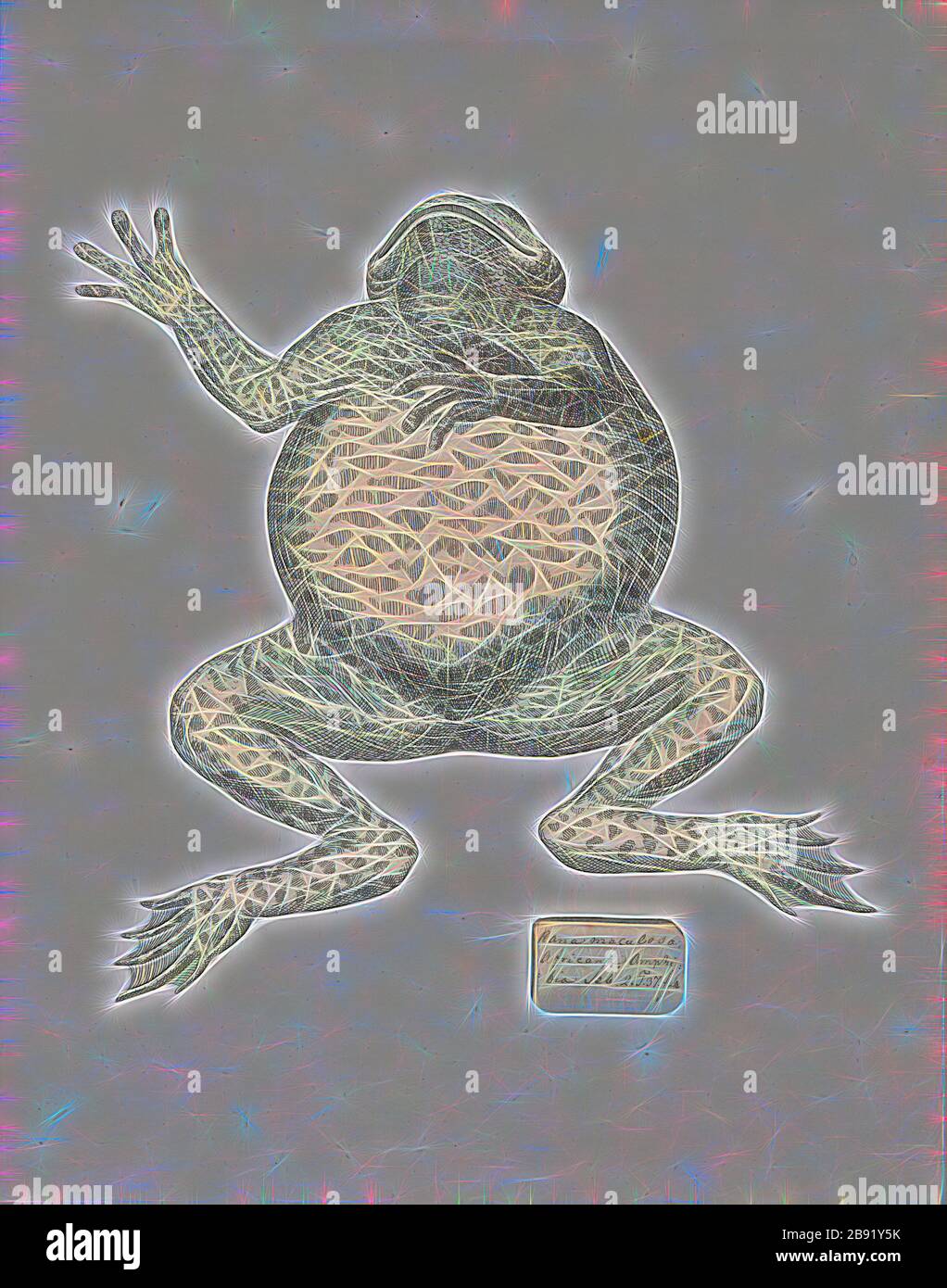 Rana maculosa, Print, Nanorana arnoldi (common name: Arnold's paa frog) is a species of frog in the Dicroglossidae family. It is found in southwestern China (Tibet, Yunnan), northern Myanmar, eastern Nepal, and adjacent northeastern India. Its natural habitats are subtropical or tropical moist montane forests, rivers, and freshwater springs., 1700-1880, Reimagined by Gibon, design of warm cheerful glowing of brightness and light rays radiance. Classic art reinvented with a modern twist. Photography inspired by futurism, embracing dynamic energy of modern technology, movement, speed and revolut Stock Photohttps://www.alamy.com/image-license-details/?v=1https://www.alamy.com/rana-maculosa-print-nanorana-arnoldi-common-name-arnolds-paa-frog-is-a-species-of-frog-in-the-dicroglossidae-family-it-is-found-in-southwestern-china-tibet-yunnan-northern-myanmar-eastern-nepal-and-adjacent-northeastern-india-its-natural-habitats-are-subtropical-or-tropical-moist-montane-forests-rivers-and-freshwater-springs-1700-1880-reimagined-by-gibon-design-of-warm-cheerful-glowing-of-brightness-and-light-rays-radiance-classic-art-reinvented-with-a-modern-twist-photography-inspired-by-futurism-embracing-dynamic-energy-of-modern-technology-movement-speed-and-revolut-image349782543.html
Rana maculosa, Print, Nanorana arnoldi (common name: Arnold's paa frog) is a species of frog in the Dicroglossidae family. It is found in southwestern China (Tibet, Yunnan), northern Myanmar, eastern Nepal, and adjacent northeastern India. Its natural habitats are subtropical or tropical moist montane forests, rivers, and freshwater springs., 1700-1880, Reimagined by Gibon, design of warm cheerful glowing of brightness and light rays radiance. Classic art reinvented with a modern twist. Photography inspired by futurism, embracing dynamic energy of modern technology, movement, speed and revolut Stock Photohttps://www.alamy.com/image-license-details/?v=1https://www.alamy.com/rana-maculosa-print-nanorana-arnoldi-common-name-arnolds-paa-frog-is-a-species-of-frog-in-the-dicroglossidae-family-it-is-found-in-southwestern-china-tibet-yunnan-northern-myanmar-eastern-nepal-and-adjacent-northeastern-india-its-natural-habitats-are-subtropical-or-tropical-moist-montane-forests-rivers-and-freshwater-springs-1700-1880-reimagined-by-gibon-design-of-warm-cheerful-glowing-of-brightness-and-light-rays-radiance-classic-art-reinvented-with-a-modern-twist-photography-inspired-by-futurism-embracing-dynamic-energy-of-modern-technology-movement-speed-and-revolut-image349782543.htmlRF2B91Y5K–Rana maculosa, Print, Nanorana arnoldi (common name: Arnold's paa frog) is a species of frog in the Dicroglossidae family. It is found in southwestern China (Tibet, Yunnan), northern Myanmar, eastern Nepal, and adjacent northeastern India. Its natural habitats are subtropical or tropical moist montane forests, rivers, and freshwater springs., 1700-1880, Reimagined by Gibon, design of warm cheerful glowing of brightness and light rays radiance. Classic art reinvented with a modern twist. Photography inspired by futurism, embracing dynamic energy of modern technology, movement, speed and revolut
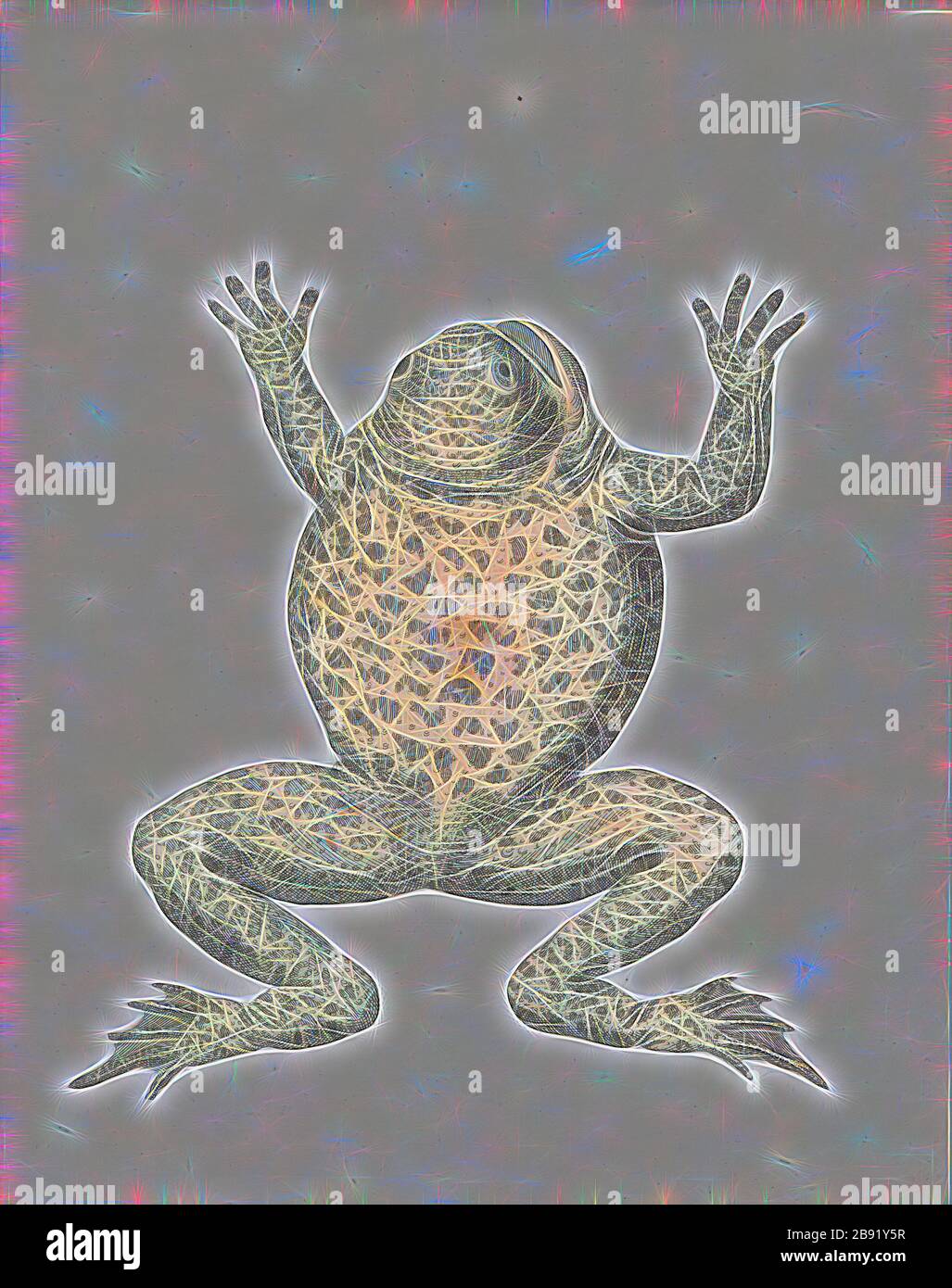 Rana maculosa, Print, Nanorana arnoldi (common name: Arnold's paa frog) is a species of frog in the Dicroglossidae family. It is found in southwestern China (Tibet, Yunnan), northern Myanmar, eastern Nepal, and adjacent northeastern India. Its natural habitats are subtropical or tropical moist montane forests, rivers, and freshwater springs., 1700-1880, Reimagined by Gibon, design of warm cheerful glowing of brightness and light rays radiance. Classic art reinvented with a modern twist. Photography inspired by futurism, embracing dynamic energy of modern technology, movement, speed and revolut Stock Photohttps://www.alamy.com/image-license-details/?v=1https://www.alamy.com/rana-maculosa-print-nanorana-arnoldi-common-name-arnolds-paa-frog-is-a-species-of-frog-in-the-dicroglossidae-family-it-is-found-in-southwestern-china-tibet-yunnan-northern-myanmar-eastern-nepal-and-adjacent-northeastern-india-its-natural-habitats-are-subtropical-or-tropical-moist-montane-forests-rivers-and-freshwater-springs-1700-1880-reimagined-by-gibon-design-of-warm-cheerful-glowing-of-brightness-and-light-rays-radiance-classic-art-reinvented-with-a-modern-twist-photography-inspired-by-futurism-embracing-dynamic-energy-of-modern-technology-movement-speed-and-revolut-image349782547.html
Rana maculosa, Print, Nanorana arnoldi (common name: Arnold's paa frog) is a species of frog in the Dicroglossidae family. It is found in southwestern China (Tibet, Yunnan), northern Myanmar, eastern Nepal, and adjacent northeastern India. Its natural habitats are subtropical or tropical moist montane forests, rivers, and freshwater springs., 1700-1880, Reimagined by Gibon, design of warm cheerful glowing of brightness and light rays radiance. Classic art reinvented with a modern twist. Photography inspired by futurism, embracing dynamic energy of modern technology, movement, speed and revolut Stock Photohttps://www.alamy.com/image-license-details/?v=1https://www.alamy.com/rana-maculosa-print-nanorana-arnoldi-common-name-arnolds-paa-frog-is-a-species-of-frog-in-the-dicroglossidae-family-it-is-found-in-southwestern-china-tibet-yunnan-northern-myanmar-eastern-nepal-and-adjacent-northeastern-india-its-natural-habitats-are-subtropical-or-tropical-moist-montane-forests-rivers-and-freshwater-springs-1700-1880-reimagined-by-gibon-design-of-warm-cheerful-glowing-of-brightness-and-light-rays-radiance-classic-art-reinvented-with-a-modern-twist-photography-inspired-by-futurism-embracing-dynamic-energy-of-modern-technology-movement-speed-and-revolut-image349782547.htmlRF2B91Y5R–Rana maculosa, Print, Nanorana arnoldi (common name: Arnold's paa frog) is a species of frog in the Dicroglossidae family. It is found in southwestern China (Tibet, Yunnan), northern Myanmar, eastern Nepal, and adjacent northeastern India. Its natural habitats are subtropical or tropical moist montane forests, rivers, and freshwater springs., 1700-1880, Reimagined by Gibon, design of warm cheerful glowing of brightness and light rays radiance. Classic art reinvented with a modern twist. Photography inspired by futurism, embracing dynamic energy of modern technology, movement, speed and revolut
 Expulsion from Paradise, Adam and Eve are chased away from paradise by an angel with a flaming sword. The print is part of a seven-part series with scenes from the Bible book Genesis, expulsion or Adam and Eve from paradise (Genesis 3: 22-24), Gerard de Lairesse (mentioned on object), 1665, paper, etching, h 221 mm × w 249 mm, Frankenthal, c. 1759–1762, Reimagined by Gibon, design of warm cheerful glowing of brightness and light rays radiance. Classic art reinvented with a modern twist. Photography inspired by futurism, embracing dynamic energy of modern technology, movement, speed and revolut Stock Photohttps://www.alamy.com/image-license-details/?v=1https://www.alamy.com/expulsion-from-paradise-adam-and-eve-are-chased-away-from-paradise-by-an-angel-with-a-flaming-sword-the-print-is-part-of-a-seven-part-series-with-scenes-from-the-bible-book-genesis-expulsion-or-adam-and-eve-from-paradise-genesis-3-22-24-gerard-de-lairesse-mentioned-on-object-1665-paper-etching-h-221-mm-w-249-mm-frankenthal-c-17591762-reimagined-by-gibon-design-of-warm-cheerful-glowing-of-brightness-and-light-rays-radiance-classic-art-reinvented-with-a-modern-twist-photography-inspired-by-futurism-embracing-dynamic-energy-of-modern-technology-movement-speed-and-revolut-image350007543.html
Expulsion from Paradise, Adam and Eve are chased away from paradise by an angel with a flaming sword. The print is part of a seven-part series with scenes from the Bible book Genesis, expulsion or Adam and Eve from paradise (Genesis 3: 22-24), Gerard de Lairesse (mentioned on object), 1665, paper, etching, h 221 mm × w 249 mm, Frankenthal, c. 1759–1762, Reimagined by Gibon, design of warm cheerful glowing of brightness and light rays radiance. Classic art reinvented with a modern twist. Photography inspired by futurism, embracing dynamic energy of modern technology, movement, speed and revolut Stock Photohttps://www.alamy.com/image-license-details/?v=1https://www.alamy.com/expulsion-from-paradise-adam-and-eve-are-chased-away-from-paradise-by-an-angel-with-a-flaming-sword-the-print-is-part-of-a-seven-part-series-with-scenes-from-the-bible-book-genesis-expulsion-or-adam-and-eve-from-paradise-genesis-3-22-24-gerard-de-lairesse-mentioned-on-object-1665-paper-etching-h-221-mm-w-249-mm-frankenthal-c-17591762-reimagined-by-gibon-design-of-warm-cheerful-glowing-of-brightness-and-light-rays-radiance-classic-art-reinvented-with-a-modern-twist-photography-inspired-by-futurism-embracing-dynamic-energy-of-modern-technology-movement-speed-and-revolut-image350007543.htmlRF2B9C65B–Expulsion from Paradise, Adam and Eve are chased away from paradise by an angel with a flaming sword. The print is part of a seven-part series with scenes from the Bible book Genesis, expulsion or Adam and Eve from paradise (Genesis 3: 22-24), Gerard de Lairesse (mentioned on object), 1665, paper, etching, h 221 mm × w 249 mm, Frankenthal, c. 1759–1762, Reimagined by Gibon, design of warm cheerful glowing of brightness and light rays radiance. Classic art reinvented with a modern twist. Photography inspired by futurism, embracing dynamic energy of modern technology, movement, speed and revolut
 Station 36, Goyu, Kyoka Tokaido Series, Utagawa Hiroshige 歌川広重 (Japanese, 1797-1858), Edo, about 1841, color woodblock print on paper, 15-1/2 x 21 in. (image) 16-1/2 x 22 in. (sheet), Artist's signature: Hiroshige ga Censor seal: circular kiwame Publisher's mark: Sano-ya Kihei (Sano-Ki) (Kikakudō), series, Fifty-three Stations of the Tōkaidō, Asian Art, Reimagined by Gibon, design of warm cheerful glowing of brightness and light rays radiance. Classic art reinvented with a modern twist. Photography inspired by futurism, embracing dynamic energy of modern technology, movement, speed and revolut Stock Photohttps://www.alamy.com/image-license-details/?v=1https://www.alamy.com/station-36-goyu-kyoka-tokaido-series-utagawa-hiroshige-japanese-1797-1858-edo-about-1841-color-woodblock-print-on-paper-15-12-x-21-in-image-16-12-x-22-in-sheet-artists-signature-hiroshige-ga-censor-seal-circular-kiwame-publishers-mark-sano-ya-kihei-sano-ki-kikakud-series-fifty-three-stations-of-the-tkaid-asian-art-reimagined-by-gibon-design-of-warm-cheerful-glowing-of-brightness-and-light-rays-radiance-classic-art-reinvented-with-a-modern-twist-photography-inspired-by-futurism-embracing-dynamic-energy-of-modern-technology-movement-speed-and-revolut-image349870242.html
Station 36, Goyu, Kyoka Tokaido Series, Utagawa Hiroshige 歌川広重 (Japanese, 1797-1858), Edo, about 1841, color woodblock print on paper, 15-1/2 x 21 in. (image) 16-1/2 x 22 in. (sheet), Artist's signature: Hiroshige ga Censor seal: circular kiwame Publisher's mark: Sano-ya Kihei (Sano-Ki) (Kikakudō), series, Fifty-three Stations of the Tōkaidō, Asian Art, Reimagined by Gibon, design of warm cheerful glowing of brightness and light rays radiance. Classic art reinvented with a modern twist. Photography inspired by futurism, embracing dynamic energy of modern technology, movement, speed and revolut Stock Photohttps://www.alamy.com/image-license-details/?v=1https://www.alamy.com/station-36-goyu-kyoka-tokaido-series-utagawa-hiroshige-japanese-1797-1858-edo-about-1841-color-woodblock-print-on-paper-15-12-x-21-in-image-16-12-x-22-in-sheet-artists-signature-hiroshige-ga-censor-seal-circular-kiwame-publishers-mark-sano-ya-kihei-sano-ki-kikakud-series-fifty-three-stations-of-the-tkaid-asian-art-reimagined-by-gibon-design-of-warm-cheerful-glowing-of-brightness-and-light-rays-radiance-classic-art-reinvented-with-a-modern-twist-photography-inspired-by-futurism-embracing-dynamic-energy-of-modern-technology-movement-speed-and-revolut-image349870242.htmlRF2B95Y1P–Station 36, Goyu, Kyoka Tokaido Series, Utagawa Hiroshige 歌川広重 (Japanese, 1797-1858), Edo, about 1841, color woodblock print on paper, 15-1/2 x 21 in. (image) 16-1/2 x 22 in. (sheet), Artist's signature: Hiroshige ga Censor seal: circular kiwame Publisher's mark: Sano-ya Kihei (Sano-Ki) (Kikakudō), series, Fifty-three Stations of the Tōkaidō, Asian Art, Reimagined by Gibon, design of warm cheerful glowing of brightness and light rays radiance. Classic art reinvented with a modern twist. Photography inspired by futurism, embracing dynamic energy of modern technology, movement, speed and revolut
![Proserpina, 1588/90 (probably print 1617/20), chiaroscuro woodcut of three plates (light olive, light brown and black), image: 34.4 x 26.2 cm (oval) |, Leaf: 35.6 x 26.5 cm (oval cut out), M. l., monogrammed (in the bright clay plate): HG [lig.], Hendrick Goltzius, Mühlbrecht 1558–1617 Haarlem, Willem Jansz. Blaeu, Verleger, Alkmaar 1571–1638 Amsterdam, Reimagined by Gibon, design of warm cheerful glowing of brightness and light rays radiance. Classic art reinvented with a modern twist. Photography inspired by futurism, embracing dynamic energy of modern technology, movement, speed and revolut Stock Photo Proserpina, 1588/90 (probably print 1617/20), chiaroscuro woodcut of three plates (light olive, light brown and black), image: 34.4 x 26.2 cm (oval) |, Leaf: 35.6 x 26.5 cm (oval cut out), M. l., monogrammed (in the bright clay plate): HG [lig.], Hendrick Goltzius, Mühlbrecht 1558–1617 Haarlem, Willem Jansz. Blaeu, Verleger, Alkmaar 1571–1638 Amsterdam, Reimagined by Gibon, design of warm cheerful glowing of brightness and light rays radiance. Classic art reinvented with a modern twist. Photography inspired by futurism, embracing dynamic energy of modern technology, movement, speed and revolut Stock Photo](https://c8.alamy.com/comp/2B932WP/proserpina-158890-probably-print-161720-chiaroscuro-woodcut-of-three-plates-light-olive-light-brown-and-black-image-344-x-262-cm-oval-leaf-356-x-265-cm-oval-cut-out-m-l-monogrammed-in-the-bright-clay-plate-hg-lig-hendrick-goltzius-mhlbrecht-15581617-haarlem-willem-jansz-blaeu-verleger-alkmaar-15711638-amsterdam-reimagined-by-gibon-design-of-warm-cheerful-glowing-of-brightness-and-light-rays-radiance-classic-art-reinvented-with-a-modern-twist-photography-inspired-by-futurism-embracing-dynamic-energy-of-modern-technology-movement-speed-and-revolut-2B932WP.jpg) Proserpina, 1588/90 (probably print 1617/20), chiaroscuro woodcut of three plates (light olive, light brown and black), image: 34.4 x 26.2 cm (oval) |, Leaf: 35.6 x 26.5 cm (oval cut out), M. l., monogrammed (in the bright clay plate): HG [lig.], Hendrick Goltzius, Mühlbrecht 1558–1617 Haarlem, Willem Jansz. Blaeu, Verleger, Alkmaar 1571–1638 Amsterdam, Reimagined by Gibon, design of warm cheerful glowing of brightness and light rays radiance. Classic art reinvented with a modern twist. Photography inspired by futurism, embracing dynamic energy of modern technology, movement, speed and revolut Stock Photohttps://www.alamy.com/image-license-details/?v=1https://www.alamy.com/proserpina-158890-probably-print-161720-chiaroscuro-woodcut-of-three-plates-light-olive-light-brown-and-black-image-344-x-262-cm-oval-leaf-356-x-265-cm-oval-cut-out-m-l-monogrammed-in-the-bright-clay-plate-hg-lig-hendrick-goltzius-mhlbrecht-15581617-haarlem-willem-jansz-blaeu-verleger-alkmaar-15711638-amsterdam-reimagined-by-gibon-design-of-warm-cheerful-glowing-of-brightness-and-light-rays-radiance-classic-art-reinvented-with-a-modern-twist-photography-inspired-by-futurism-embracing-dynamic-energy-of-modern-technology-movement-speed-and-revolut-image349807410.html
Proserpina, 1588/90 (probably print 1617/20), chiaroscuro woodcut of three plates (light olive, light brown and black), image: 34.4 x 26.2 cm (oval) |, Leaf: 35.6 x 26.5 cm (oval cut out), M. l., monogrammed (in the bright clay plate): HG [lig.], Hendrick Goltzius, Mühlbrecht 1558–1617 Haarlem, Willem Jansz. Blaeu, Verleger, Alkmaar 1571–1638 Amsterdam, Reimagined by Gibon, design of warm cheerful glowing of brightness and light rays radiance. Classic art reinvented with a modern twist. Photography inspired by futurism, embracing dynamic energy of modern technology, movement, speed and revolut Stock Photohttps://www.alamy.com/image-license-details/?v=1https://www.alamy.com/proserpina-158890-probably-print-161720-chiaroscuro-woodcut-of-three-plates-light-olive-light-brown-and-black-image-344-x-262-cm-oval-leaf-356-x-265-cm-oval-cut-out-m-l-monogrammed-in-the-bright-clay-plate-hg-lig-hendrick-goltzius-mhlbrecht-15581617-haarlem-willem-jansz-blaeu-verleger-alkmaar-15711638-amsterdam-reimagined-by-gibon-design-of-warm-cheerful-glowing-of-brightness-and-light-rays-radiance-classic-art-reinvented-with-a-modern-twist-photography-inspired-by-futurism-embracing-dynamic-energy-of-modern-technology-movement-speed-and-revolut-image349807410.htmlRF2B932WP–Proserpina, 1588/90 (probably print 1617/20), chiaroscuro woodcut of three plates (light olive, light brown and black), image: 34.4 x 26.2 cm (oval) |, Leaf: 35.6 x 26.5 cm (oval cut out), M. l., monogrammed (in the bright clay plate): HG [lig.], Hendrick Goltzius, Mühlbrecht 1558–1617 Haarlem, Willem Jansz. Blaeu, Verleger, Alkmaar 1571–1638 Amsterdam, Reimagined by Gibon, design of warm cheerful glowing of brightness and light rays radiance. Classic art reinvented with a modern twist. Photography inspired by futurism, embracing dynamic energy of modern technology, movement, speed and revolut
 View of the Avenue des Champs-Elysées in Paris Paris. Avenue des Champs-Elysées (title on object), avenue, boulevard, promenade, esplanade, four-wheeled vehicle drawn by one animal, Champs-Elysées, Neue Photographische Gesellschaft (mentioned on object), in or after 1895 - c. 1905, cardboard, photographic paper, gelatin silver print, h 88 mm × w 179 mm, Reimagined by Gibon, design of warm cheerful glowing of brightness and light rays radiance. Classic art reinvented with a modern twist. Photography inspired by futurism, embracing dynamic energy of modern technology, movement, speed and revolut Stock Photohttps://www.alamy.com/image-license-details/?v=1https://www.alamy.com/view-of-the-avenue-des-champs-elyses-in-paris-paris-avenue-des-champs-elyses-title-on-object-avenue-boulevard-promenade-esplanade-four-wheeled-vehicle-drawn-by-one-animal-champs-elyses-neue-photographische-gesellschaft-mentioned-on-object-in-or-after-1895-c-1905-cardboard-photographic-paper-gelatin-silver-print-h-88-mm-w-179-mm-reimagined-by-gibon-design-of-warm-cheerful-glowing-of-brightness-and-light-rays-radiance-classic-art-reinvented-with-a-modern-twist-photography-inspired-by-futurism-embracing-dynamic-energy-of-modern-technology-movement-speed-and-revolut-image349994691.html
View of the Avenue des Champs-Elysées in Paris Paris. Avenue des Champs-Elysées (title on object), avenue, boulevard, promenade, esplanade, four-wheeled vehicle drawn by one animal, Champs-Elysées, Neue Photographische Gesellschaft (mentioned on object), in or after 1895 - c. 1905, cardboard, photographic paper, gelatin silver print, h 88 mm × w 179 mm, Reimagined by Gibon, design of warm cheerful glowing of brightness and light rays radiance. Classic art reinvented with a modern twist. Photography inspired by futurism, embracing dynamic energy of modern technology, movement, speed and revolut Stock Photohttps://www.alamy.com/image-license-details/?v=1https://www.alamy.com/view-of-the-avenue-des-champs-elyses-in-paris-paris-avenue-des-champs-elyses-title-on-object-avenue-boulevard-promenade-esplanade-four-wheeled-vehicle-drawn-by-one-animal-champs-elyses-neue-photographische-gesellschaft-mentioned-on-object-in-or-after-1895-c-1905-cardboard-photographic-paper-gelatin-silver-print-h-88-mm-w-179-mm-reimagined-by-gibon-design-of-warm-cheerful-glowing-of-brightness-and-light-rays-radiance-classic-art-reinvented-with-a-modern-twist-photography-inspired-by-futurism-embracing-dynamic-energy-of-modern-technology-movement-speed-and-revolut-image349994691.htmlRF2B9BHPB–View of the Avenue des Champs-Elysées in Paris Paris. Avenue des Champs-Elysées (title on object), avenue, boulevard, promenade, esplanade, four-wheeled vehicle drawn by one animal, Champs-Elysées, Neue Photographische Gesellschaft (mentioned on object), in or after 1895 - c. 1905, cardboard, photographic paper, gelatin silver print, h 88 mm × w 179 mm, Reimagined by Gibon, design of warm cheerful glowing of brightness and light rays radiance. Classic art reinvented with a modern twist. Photography inspired by futurism, embracing dynamic energy of modern technology, movement, speed and revolut
 Shinano 信濃, Utagawa Hiroshige 歌川広重 (Japanese, 1797-1858), Yokogawa Takejirō, Engraver (Japanese), Edo, 1853 (Ox 8), ink on paper, color woodblock print, 13-7/16 x 9 in., Signed: Hiroshige hitsu, other title, Subtitle: Mt. Kyodai and the Moon Reflected in the Rice Paddies at Sarashina, series, Famous Places in the Sixty-odd Provinces 六十余州名所図絵, Asian Art, Reimagined by Gibon, design of warm cheerful glowing of brightness and light rays radiance. Classic art reinvented with a modern twist. Photography inspired by futurism, embracing dynamic energy of modern technology, movement, speed and revolut Stock Photohttps://www.alamy.com/image-license-details/?v=1https://www.alamy.com/shinano-utagawa-hiroshige-japanese-1797-1858-yokogawa-takejir-engraver-japanese-edo-1853-ox-8-ink-on-paper-color-woodblock-print-13-716-x-9-in-signed-hiroshige-hitsu-other-title-subtitle-mt-kyodai-and-the-moon-reflected-in-the-rice-paddies-at-sarashina-series-famous-places-in-the-sixty-odd-provinces-asian-art-reimagined-by-gibon-design-of-warm-cheerful-glowing-of-brightness-and-light-rays-radiance-classic-art-reinvented-with-a-modern-twist-photography-inspired-by-futurism-embracing-dynamic-energy-of-modern-technology-movement-speed-and-revolut-image349864848.html
Shinano 信濃, Utagawa Hiroshige 歌川広重 (Japanese, 1797-1858), Yokogawa Takejirō, Engraver (Japanese), Edo, 1853 (Ox 8), ink on paper, color woodblock print, 13-7/16 x 9 in., Signed: Hiroshige hitsu, other title, Subtitle: Mt. Kyodai and the Moon Reflected in the Rice Paddies at Sarashina, series, Famous Places in the Sixty-odd Provinces 六十余州名所図絵, Asian Art, Reimagined by Gibon, design of warm cheerful glowing of brightness and light rays radiance. Classic art reinvented with a modern twist. Photography inspired by futurism, embracing dynamic energy of modern technology, movement, speed and revolut Stock Photohttps://www.alamy.com/image-license-details/?v=1https://www.alamy.com/shinano-utagawa-hiroshige-japanese-1797-1858-yokogawa-takejir-engraver-japanese-edo-1853-ox-8-ink-on-paper-color-woodblock-print-13-716-x-9-in-signed-hiroshige-hitsu-other-title-subtitle-mt-kyodai-and-the-moon-reflected-in-the-rice-paddies-at-sarashina-series-famous-places-in-the-sixty-odd-provinces-asian-art-reimagined-by-gibon-design-of-warm-cheerful-glowing-of-brightness-and-light-rays-radiance-classic-art-reinvented-with-a-modern-twist-photography-inspired-by-futurism-embracing-dynamic-energy-of-modern-technology-movement-speed-and-revolut-image349864848.htmlRF2B95M54–Shinano 信濃, Utagawa Hiroshige 歌川広重 (Japanese, 1797-1858), Yokogawa Takejirō, Engraver (Japanese), Edo, 1853 (Ox 8), ink on paper, color woodblock print, 13-7/16 x 9 in., Signed: Hiroshige hitsu, other title, Subtitle: Mt. Kyodai and the Moon Reflected in the Rice Paddies at Sarashina, series, Famous Places in the Sixty-odd Provinces 六十余州名所図絵, Asian Art, Reimagined by Gibon, design of warm cheerful glowing of brightness and light rays radiance. Classic art reinvented with a modern twist. Photography inspired by futurism, embracing dynamic energy of modern technology, movement, speed and revolut
 Shinano 信濃, Utagawa Hiroshige 歌川広重 (Japanese, 1797-1858), Yokogawa Takejirō, Engraver (Japanese), Edo, 1853 (Ox 8), ink on paper, color woodblock print, 13-7/16 x 9 in., Signed: Hiroshige hitsu, other title, Subtitle: Mt. Kyodai and the Moon Reflected in the Rice Paddies at Sarashina, series, Famous Places in the Sixty-odd Provinces 六十余州名所図絵, Asian Art, Reimagined by Gibon, design of warm cheerful glowing of brightness and light rays radiance. Classic art reinvented with a modern twist. Photography inspired by futurism, embracing dynamic energy of modern technology, movement, speed and revolut Stock Photohttps://www.alamy.com/image-license-details/?v=1https://www.alamy.com/shinano-utagawa-hiroshige-japanese-1797-1858-yokogawa-takejir-engraver-japanese-edo-1853-ox-8-ink-on-paper-color-woodblock-print-13-716-x-9-in-signed-hiroshige-hitsu-other-title-subtitle-mt-kyodai-and-the-moon-reflected-in-the-rice-paddies-at-sarashina-series-famous-places-in-the-sixty-odd-provinces-asian-art-reimagined-by-gibon-design-of-warm-cheerful-glowing-of-brightness-and-light-rays-radiance-classic-art-reinvented-with-a-modern-twist-photography-inspired-by-futurism-embracing-dynamic-energy-of-modern-technology-movement-speed-and-revolut-image349864845.html
Shinano 信濃, Utagawa Hiroshige 歌川広重 (Japanese, 1797-1858), Yokogawa Takejirō, Engraver (Japanese), Edo, 1853 (Ox 8), ink on paper, color woodblock print, 13-7/16 x 9 in., Signed: Hiroshige hitsu, other title, Subtitle: Mt. Kyodai and the Moon Reflected in the Rice Paddies at Sarashina, series, Famous Places in the Sixty-odd Provinces 六十余州名所図絵, Asian Art, Reimagined by Gibon, design of warm cheerful glowing of brightness and light rays radiance. Classic art reinvented with a modern twist. Photography inspired by futurism, embracing dynamic energy of modern technology, movement, speed and revolut Stock Photohttps://www.alamy.com/image-license-details/?v=1https://www.alamy.com/shinano-utagawa-hiroshige-japanese-1797-1858-yokogawa-takejir-engraver-japanese-edo-1853-ox-8-ink-on-paper-color-woodblock-print-13-716-x-9-in-signed-hiroshige-hitsu-other-title-subtitle-mt-kyodai-and-the-moon-reflected-in-the-rice-paddies-at-sarashina-series-famous-places-in-the-sixty-odd-provinces-asian-art-reimagined-by-gibon-design-of-warm-cheerful-glowing-of-brightness-and-light-rays-radiance-classic-art-reinvented-with-a-modern-twist-photography-inspired-by-futurism-embracing-dynamic-energy-of-modern-technology-movement-speed-and-revolut-image349864845.htmlRF2B95M51–Shinano 信濃, Utagawa Hiroshige 歌川広重 (Japanese, 1797-1858), Yokogawa Takejirō, Engraver (Japanese), Edo, 1853 (Ox 8), ink on paper, color woodblock print, 13-7/16 x 9 in., Signed: Hiroshige hitsu, other title, Subtitle: Mt. Kyodai and the Moon Reflected in the Rice Paddies at Sarashina, series, Famous Places in the Sixty-odd Provinces 六十余州名所図絵, Asian Art, Reimagined by Gibon, design of warm cheerful glowing of brightness and light rays radiance. Classic art reinvented with a modern twist. Photography inspired by futurism, embracing dynamic energy of modern technology, movement, speed and revolut
 Bridge over the Solo river (title on object) State railways on Java (series title), The bridge over the Solo river, seen from the railway. Four men on the bridge. Part of a group of 62 photos in a box with the inscription 'State Railways on Java' from 1888, Solo River, anonymous, Java, 1880 - 1888, photographic paper, albumen print, h 178 mm × w 239 mm, Reimagined by Gibon, design of warm cheerful glowing of brightness and light rays radiance. Classic art reinvented with a modern twist. Photography inspired by futurism, embracing dynamic energy of modern technology, movement, speed and revolut Stock Photohttps://www.alamy.com/image-license-details/?v=1https://www.alamy.com/bridge-over-the-solo-river-title-on-object-state-railways-on-java-series-title-the-bridge-over-the-solo-river-seen-from-the-railway-four-men-on-the-bridge-part-of-a-group-of-62-photos-in-a-box-with-the-inscription-state-railways-on-java-from-1888-solo-river-anonymous-java-1880-1888-photographic-paper-albumen-print-h-178-mm-w-239-mm-reimagined-by-gibon-design-of-warm-cheerful-glowing-of-brightness-and-light-rays-radiance-classic-art-reinvented-with-a-modern-twist-photography-inspired-by-futurism-embracing-dynamic-energy-of-modern-technology-movement-speed-and-revolut-image349981456.html
Bridge over the Solo river (title on object) State railways on Java (series title), The bridge over the Solo river, seen from the railway. Four men on the bridge. Part of a group of 62 photos in a box with the inscription 'State Railways on Java' from 1888, Solo River, anonymous, Java, 1880 - 1888, photographic paper, albumen print, h 178 mm × w 239 mm, Reimagined by Gibon, design of warm cheerful glowing of brightness and light rays radiance. Classic art reinvented with a modern twist. Photography inspired by futurism, embracing dynamic energy of modern technology, movement, speed and revolut Stock Photohttps://www.alamy.com/image-license-details/?v=1https://www.alamy.com/bridge-over-the-solo-river-title-on-object-state-railways-on-java-series-title-the-bridge-over-the-solo-river-seen-from-the-railway-four-men-on-the-bridge-part-of-a-group-of-62-photos-in-a-box-with-the-inscription-state-railways-on-java-from-1888-solo-river-anonymous-java-1880-1888-photographic-paper-albumen-print-h-178-mm-w-239-mm-reimagined-by-gibon-design-of-warm-cheerful-glowing-of-brightness-and-light-rays-radiance-classic-art-reinvented-with-a-modern-twist-photography-inspired-by-futurism-embracing-dynamic-energy-of-modern-technology-movement-speed-and-revolut-image349981456.htmlRF2B9B0WM–Bridge over the Solo river (title on object) State railways on Java (series title), The bridge over the Solo river, seen from the railway. Four men on the bridge. Part of a group of 62 photos in a box with the inscription 'State Railways on Java' from 1888, Solo River, anonymous, Java, 1880 - 1888, photographic paper, albumen print, h 178 mm × w 239 mm, Reimagined by Gibon, design of warm cheerful glowing of brightness and light rays radiance. Classic art reinvented with a modern twist. Photography inspired by futurism, embracing dynamic energy of modern technology, movement, speed and revolut
 The History of Windsor Great Park and Windsor Forest...Photographs by The Earl of Caithness & Mr. Bembridge sic, of Windsor, William Menzies, James Sinclair, fourteenth earl of Caithness (British, 1821 - 1881), William Bambridge (British, 1819 - 1879), London, England, 1864, Albumen silver print, Closed: 58.3 × 44.5 × 2.5 cm (22 15/16 × 17 1/2 × 1 in.), Reimagined by Gibon, design of warm cheerful glowing of brightness and light rays radiance. Classic art reinvented with a modern twist. Photography inspired by futurism, embracing dynamic energy of modern technology, movement, speed and revolut Stock Photohttps://www.alamy.com/image-license-details/?v=1https://www.alamy.com/the-history-of-windsor-great-park-and-windsor-forestphotographs-by-the-earl-of-caithness-mr-bembridge-sic-of-windsor-william-menzies-james-sinclair-fourteenth-earl-of-caithness-british-1821-1881-william-bambridge-british-1819-1879-london-england-1864-albumen-silver-print-closed-583-445-25-cm-22-1516-17-12-1-in-reimagined-by-gibon-design-of-warm-cheerful-glowing-of-brightness-and-light-rays-radiance-classic-art-reinvented-with-a-modern-twist-photography-inspired-by-futurism-embracing-dynamic-energy-of-modern-technology-movement-speed-and-revolut-image349900496.html
The History of Windsor Great Park and Windsor Forest...Photographs by The Earl of Caithness & Mr. Bembridge sic, of Windsor, William Menzies, James Sinclair, fourteenth earl of Caithness (British, 1821 - 1881), William Bambridge (British, 1819 - 1879), London, England, 1864, Albumen silver print, Closed: 58.3 × 44.5 × 2.5 cm (22 15/16 × 17 1/2 × 1 in.), Reimagined by Gibon, design of warm cheerful glowing of brightness and light rays radiance. Classic art reinvented with a modern twist. Photography inspired by futurism, embracing dynamic energy of modern technology, movement, speed and revolut Stock Photohttps://www.alamy.com/image-license-details/?v=1https://www.alamy.com/the-history-of-windsor-great-park-and-windsor-forestphotographs-by-the-earl-of-caithness-mr-bembridge-sic-of-windsor-william-menzies-james-sinclair-fourteenth-earl-of-caithness-british-1821-1881-william-bambridge-british-1819-1879-london-england-1864-albumen-silver-print-closed-583-445-25-cm-22-1516-17-12-1-in-reimagined-by-gibon-design-of-warm-cheerful-glowing-of-brightness-and-light-rays-radiance-classic-art-reinvented-with-a-modern-twist-photography-inspired-by-futurism-embracing-dynamic-energy-of-modern-technology-movement-speed-and-revolut-image349900496.htmlRF2B979J8–The History of Windsor Great Park and Windsor Forest...Photographs by The Earl of Caithness & Mr. Bembridge sic, of Windsor, William Menzies, James Sinclair, fourteenth earl of Caithness (British, 1821 - 1881), William Bambridge (British, 1819 - 1879), London, England, 1864, Albumen silver print, Closed: 58.3 × 44.5 × 2.5 cm (22 15/16 × 17 1/2 × 1 in.), Reimagined by Gibon, design of warm cheerful glowing of brightness and light rays radiance. Classic art reinvented with a modern twist. Photography inspired by futurism, embracing dynamic energy of modern technology, movement, speed and revolut
 Station building in Kedirie (title on object) State railways on Java (series title), The station building in Kedirie. With a train in the station. Part of a group of 62 photos in a box with the inscription 'State Railways on Java' from 1888, Kediri, anonymous, Java, 1880 - 1888, photographic paper, albumen print, h 175 mm × w 210 mm h 250 mm × w 230 mm, Reimagined by Gibon, design of warm cheerful glowing of brightness and light rays radiance. Classic art reinvented with a modern twist. Photography inspired by futurism, embracing dynamic energy of modern technology, movement, speed and revolut Stock Photohttps://www.alamy.com/image-license-details/?v=1https://www.alamy.com/station-building-in-kedirie-title-on-object-state-railways-on-java-series-title-the-station-building-in-kedirie-with-a-train-in-the-station-part-of-a-group-of-62-photos-in-a-box-with-the-inscription-state-railways-on-java-from-1888-kediri-anonymous-java-1880-1888-photographic-paper-albumen-print-h-175-mm-w-210-mm-h-250-mm-w-230-mm-reimagined-by-gibon-design-of-warm-cheerful-glowing-of-brightness-and-light-rays-radiance-classic-art-reinvented-with-a-modern-twist-photography-inspired-by-futurism-embracing-dynamic-energy-of-modern-technology-movement-speed-and-revolut-image349981458.html
Station building in Kedirie (title on object) State railways on Java (series title), The station building in Kedirie. With a train in the station. Part of a group of 62 photos in a box with the inscription 'State Railways on Java' from 1888, Kediri, anonymous, Java, 1880 - 1888, photographic paper, albumen print, h 175 mm × w 210 mm h 250 mm × w 230 mm, Reimagined by Gibon, design of warm cheerful glowing of brightness and light rays radiance. Classic art reinvented with a modern twist. Photography inspired by futurism, embracing dynamic energy of modern technology, movement, speed and revolut Stock Photohttps://www.alamy.com/image-license-details/?v=1https://www.alamy.com/station-building-in-kedirie-title-on-object-state-railways-on-java-series-title-the-station-building-in-kedirie-with-a-train-in-the-station-part-of-a-group-of-62-photos-in-a-box-with-the-inscription-state-railways-on-java-from-1888-kediri-anonymous-java-1880-1888-photographic-paper-albumen-print-h-175-mm-w-210-mm-h-250-mm-w-230-mm-reimagined-by-gibon-design-of-warm-cheerful-glowing-of-brightness-and-light-rays-radiance-classic-art-reinvented-with-a-modern-twist-photography-inspired-by-futurism-embracing-dynamic-energy-of-modern-technology-movement-speed-and-revolut-image349981458.htmlRF2B9B0WP–Station building in Kedirie (title on object) State railways on Java (series title), The station building in Kedirie. With a train in the station. Part of a group of 62 photos in a box with the inscription 'State Railways on Java' from 1888, Kediri, anonymous, Java, 1880 - 1888, photographic paper, albumen print, h 175 mm × w 210 mm h 250 mm × w 230 mm, Reimagined by Gibon, design of warm cheerful glowing of brightness and light rays radiance. Classic art reinvented with a modern twist. Photography inspired by futurism, embracing dynamic energy of modern technology, movement, speed and revolut
 No. 2: Ushiwakamaru Learns Swordsplay from the Tengu at Sojogatani on Mount Kurama (Nikai, Kuramayama Sojogatani ni oite Ushiwakamaru ijin yori kenpo o manabu), from the series The Life of Yoshitsune (Yoshitsune ichidai zue), c. 1832/34, Utagawa Hiroshige ?? ??, Japanese, 1797-1858, Japan, Color woodblock print, oban, 24 x 35.9 cm (9 7/16 x 14 1/8 in.), Reimagined by Gibon, design of warm cheerful glowing of brightness and light rays radiance. Classic art reinvented with a modern twist. Photography inspired by futurism, embracing dynamic energy of modern technology, movement, speed and revolut Stock Photohttps://www.alamy.com/image-license-details/?v=1https://www.alamy.com/no-2-ushiwakamaru-learns-swordsplay-from-the-tengu-at-sojogatani-on-mount-kurama-nikai-kuramayama-sojogatani-ni-oite-ushiwakamaru-ijin-yori-kenpo-o-manabu-from-the-series-the-life-of-yoshitsune-yoshitsune-ichidai-zue-c-183234-utagawa-hiroshige-japanese-1797-1858-japan-color-woodblock-print-oban-24-x-359-cm-9-716-x-14-18-in-reimagined-by-gibon-design-of-warm-cheerful-glowing-of-brightness-and-light-rays-radiance-classic-art-reinvented-with-a-modern-twist-photography-inspired-by-futurism-embracing-dynamic-energy-of-modern-technology-movement-speed-and-revolut-image349692309.html
No. 2: Ushiwakamaru Learns Swordsplay from the Tengu at Sojogatani on Mount Kurama (Nikai, Kuramayama Sojogatani ni oite Ushiwakamaru ijin yori kenpo o manabu), from the series The Life of Yoshitsune (Yoshitsune ichidai zue), c. 1832/34, Utagawa Hiroshige ?? ??, Japanese, 1797-1858, Japan, Color woodblock print, oban, 24 x 35.9 cm (9 7/16 x 14 1/8 in.), Reimagined by Gibon, design of warm cheerful glowing of brightness and light rays radiance. Classic art reinvented with a modern twist. Photography inspired by futurism, embracing dynamic energy of modern technology, movement, speed and revolut Stock Photohttps://www.alamy.com/image-license-details/?v=1https://www.alamy.com/no-2-ushiwakamaru-learns-swordsplay-from-the-tengu-at-sojogatani-on-mount-kurama-nikai-kuramayama-sojogatani-ni-oite-ushiwakamaru-ijin-yori-kenpo-o-manabu-from-the-series-the-life-of-yoshitsune-yoshitsune-ichidai-zue-c-183234-utagawa-hiroshige-japanese-1797-1858-japan-color-woodblock-print-oban-24-x-359-cm-9-716-x-14-18-in-reimagined-by-gibon-design-of-warm-cheerful-glowing-of-brightness-and-light-rays-radiance-classic-art-reinvented-with-a-modern-twist-photography-inspired-by-futurism-embracing-dynamic-energy-of-modern-technology-movement-speed-and-revolut-image349692309.htmlRF2B8WT31–No. 2: Ushiwakamaru Learns Swordsplay from the Tengu at Sojogatani on Mount Kurama (Nikai, Kuramayama Sojogatani ni oite Ushiwakamaru ijin yori kenpo o manabu), from the series The Life of Yoshitsune (Yoshitsune ichidai zue), c. 1832/34, Utagawa Hiroshige ?? ??, Japanese, 1797-1858, Japan, Color woodblock print, oban, 24 x 35.9 cm (9 7/16 x 14 1/8 in.), Reimagined by Gibon, design of warm cheerful glowing of brightness and light rays radiance. Classic art reinvented with a modern twist. Photography inspired by futurism, embracing dynamic energy of modern technology, movement, speed and revolut
 Interior of the Saint-Étienne-du-Mont in Paris with a view of the choir, Saint-Etienne-du-Mont. Le Choeur (title on object), Interior des é glises de Paris (series title on object), parts of church interior: choir, Église Saint-Étienne-du-Mont, HJ (mentioned on object), c. 1850 - c. 1880, photographic paper, cardboard, albumen print, h 87 mm × w 172 mm, Reimagined by Gibon, design of warm cheerful glowing of brightness and light rays radiance. Classic art reinvented with a modern twist. Photography inspired by futurism, embracing dynamic energy of modern technology, movement, speed and revolut Stock Photohttps://www.alamy.com/image-license-details/?v=1https://www.alamy.com/interior-of-the-saint-tienne-du-mont-in-paris-with-a-view-of-the-choir-saint-etienne-du-mont-le-choeur-title-on-object-interior-des-glises-de-paris-series-title-on-object-parts-of-church-interior-choir-glise-saint-tienne-du-mont-hj-mentioned-on-object-c-1850-c-1880-photographic-paper-cardboard-albumen-print-h-87-mm-w-172-mm-reimagined-by-gibon-design-of-warm-cheerful-glowing-of-brightness-and-light-rays-radiance-classic-art-reinvented-with-a-modern-twist-photography-inspired-by-futurism-embracing-dynamic-energy-of-modern-technology-movement-speed-and-revolut-image349995617.html
Interior of the Saint-Étienne-du-Mont in Paris with a view of the choir, Saint-Etienne-du-Mont. Le Choeur (title on object), Interior des é glises de Paris (series title on object), parts of church interior: choir, Église Saint-Étienne-du-Mont, HJ (mentioned on object), c. 1850 - c. 1880, photographic paper, cardboard, albumen print, h 87 mm × w 172 mm, Reimagined by Gibon, design of warm cheerful glowing of brightness and light rays radiance. Classic art reinvented with a modern twist. Photography inspired by futurism, embracing dynamic energy of modern technology, movement, speed and revolut Stock Photohttps://www.alamy.com/image-license-details/?v=1https://www.alamy.com/interior-of-the-saint-tienne-du-mont-in-paris-with-a-view-of-the-choir-saint-etienne-du-mont-le-choeur-title-on-object-interior-des-glises-de-paris-series-title-on-object-parts-of-church-interior-choir-glise-saint-tienne-du-mont-hj-mentioned-on-object-c-1850-c-1880-photographic-paper-cardboard-albumen-print-h-87-mm-w-172-mm-reimagined-by-gibon-design-of-warm-cheerful-glowing-of-brightness-and-light-rays-radiance-classic-art-reinvented-with-a-modern-twist-photography-inspired-by-futurism-embracing-dynamic-energy-of-modern-technology-movement-speed-and-revolut-image349995617.htmlRF2B9BJYD–Interior of the Saint-Étienne-du-Mont in Paris with a view of the choir, Saint-Etienne-du-Mont. Le Choeur (title on object), Interior des é glises de Paris (series title on object), parts of church interior: choir, Église Saint-Étienne-du-Mont, HJ (mentioned on object), c. 1850 - c. 1880, photographic paper, cardboard, albumen print, h 87 mm × w 172 mm, Reimagined by Gibon, design of warm cheerful glowing of brightness and light rays radiance. Classic art reinvented with a modern twist. Photography inspired by futurism, embracing dynamic energy of modern technology, movement, speed and revolut
 Kanagawa: View over the Sea from the Teahouses on the Hill (Kanagawa, dai no chaya kaijo miharashi), no. 4 from the series Famous Sights of the Fifty-three Stations (Gojusan tsugi meisho zue), also known as the Vertical Tokaido, 1855, Utagawa Hiroshige ?? ??, Japanese, 1797-1858, Japan, Color woodblock print, oban, 34.7 x 22.8 cm (13 5/8 x 8 15/16 in.), Reimagined by Gibon, design of warm cheerful glowing of brightness and light rays radiance. Classic art reinvented with a modern twist. Photography inspired by futurism, embracing dynamic energy of modern technology, movement, speed and revolut Stock Photohttps://www.alamy.com/image-license-details/?v=1https://www.alamy.com/kanagawa-view-over-the-sea-from-the-teahouses-on-the-hill-kanagawa-dai-no-chaya-kaijo-miharashi-no-4-from-the-series-famous-sights-of-the-fifty-three-stations-gojusan-tsugi-meisho-zue-also-known-as-the-vertical-tokaido-1855-utagawa-hiroshige-japanese-1797-1858-japan-color-woodblock-print-oban-347-x-228-cm-13-58-x-8-1516-in-reimagined-by-gibon-design-of-warm-cheerful-glowing-of-brightness-and-light-rays-radiance-classic-art-reinvented-with-a-modern-twist-photography-inspired-by-futurism-embracing-dynamic-energy-of-modern-technology-movement-speed-and-revolut-image349690817.html
Kanagawa: View over the Sea from the Teahouses on the Hill (Kanagawa, dai no chaya kaijo miharashi), no. 4 from the series Famous Sights of the Fifty-three Stations (Gojusan tsugi meisho zue), also known as the Vertical Tokaido, 1855, Utagawa Hiroshige ?? ??, Japanese, 1797-1858, Japan, Color woodblock print, oban, 34.7 x 22.8 cm (13 5/8 x 8 15/16 in.), Reimagined by Gibon, design of warm cheerful glowing of brightness and light rays radiance. Classic art reinvented with a modern twist. Photography inspired by futurism, embracing dynamic energy of modern technology, movement, speed and revolut Stock Photohttps://www.alamy.com/image-license-details/?v=1https://www.alamy.com/kanagawa-view-over-the-sea-from-the-teahouses-on-the-hill-kanagawa-dai-no-chaya-kaijo-miharashi-no-4-from-the-series-famous-sights-of-the-fifty-three-stations-gojusan-tsugi-meisho-zue-also-known-as-the-vertical-tokaido-1855-utagawa-hiroshige-japanese-1797-1858-japan-color-woodblock-print-oban-347-x-228-cm-13-58-x-8-1516-in-reimagined-by-gibon-design-of-warm-cheerful-glowing-of-brightness-and-light-rays-radiance-classic-art-reinvented-with-a-modern-twist-photography-inspired-by-futurism-embracing-dynamic-energy-of-modern-technology-movement-speed-and-revolut-image349690817.htmlRF2B8WP5N–Kanagawa: View over the Sea from the Teahouses on the Hill (Kanagawa, dai no chaya kaijo miharashi), no. 4 from the series Famous Sights of the Fifty-three Stations (Gojusan tsugi meisho zue), also known as the Vertical Tokaido, 1855, Utagawa Hiroshige ?? ??, Japanese, 1797-1858, Japan, Color woodblock print, oban, 34.7 x 22.8 cm (13 5/8 x 8 15/16 in.), Reimagined by Gibon, design of warm cheerful glowing of brightness and light rays radiance. Classic art reinvented with a modern twist. Photography inspired by futurism, embracing dynamic energy of modern technology, movement, speed and revolut
 Bridge wide 15 M. 2 x 5 M. over Kali Djambran (title on object) State railways in Java (series title), Construction of the rail bridge over Kali Djambran. Part of a group of 62 photos in a box with the inscription 'State Railways on Java' from 1888, Java, anonymous, 1880 - 1888, photographic paper, albumen print, h 175 mm × w 210 mm h 240 mm × w 302 mm, Reimagined by Gibon, design of warm cheerful glowing of brightness and light rays radiance. Classic art reinvented with a modern twist. Photography inspired by futurism, embracing dynamic energy of modern technology, movement, speed and revolut Stock Photohttps://www.alamy.com/image-license-details/?v=1https://www.alamy.com/bridge-wide-15-m-2-x-5-m-over-kali-djambran-title-on-object-state-railways-in-java-series-title-construction-of-the-rail-bridge-over-kali-djambran-part-of-a-group-of-62-photos-in-a-box-with-the-inscription-state-railways-on-java-from-1888-java-anonymous-1880-1888-photographic-paper-albumen-print-h-175-mm-w-210-mm-h-240-mm-w-302-mm-reimagined-by-gibon-design-of-warm-cheerful-glowing-of-brightness-and-light-rays-radiance-classic-art-reinvented-with-a-modern-twist-photography-inspired-by-futurism-embracing-dynamic-energy-of-modern-technology-movement-speed-and-revolut-image349981460.html
Bridge wide 15 M. 2 x 5 M. over Kali Djambran (title on object) State railways in Java (series title), Construction of the rail bridge over Kali Djambran. Part of a group of 62 photos in a box with the inscription 'State Railways on Java' from 1888, Java, anonymous, 1880 - 1888, photographic paper, albumen print, h 175 mm × w 210 mm h 240 mm × w 302 mm, Reimagined by Gibon, design of warm cheerful glowing of brightness and light rays radiance. Classic art reinvented with a modern twist. Photography inspired by futurism, embracing dynamic energy of modern technology, movement, speed and revolut Stock Photohttps://www.alamy.com/image-license-details/?v=1https://www.alamy.com/bridge-wide-15-m-2-x-5-m-over-kali-djambran-title-on-object-state-railways-in-java-series-title-construction-of-the-rail-bridge-over-kali-djambran-part-of-a-group-of-62-photos-in-a-box-with-the-inscription-state-railways-on-java-from-1888-java-anonymous-1880-1888-photographic-paper-albumen-print-h-175-mm-w-210-mm-h-240-mm-w-302-mm-reimagined-by-gibon-design-of-warm-cheerful-glowing-of-brightness-and-light-rays-radiance-classic-art-reinvented-with-a-modern-twist-photography-inspired-by-futurism-embracing-dynamic-energy-of-modern-technology-movement-speed-and-revolut-image349981460.htmlRF2B9B0WT–Bridge wide 15 M. 2 x 5 M. over Kali Djambran (title on object) State railways in Java (series title), Construction of the rail bridge over Kali Djambran. Part of a group of 62 photos in a box with the inscription 'State Railways on Java' from 1888, Java, anonymous, 1880 - 1888, photographic paper, albumen print, h 175 mm × w 210 mm h 240 mm × w 302 mm, Reimagined by Gibon, design of warm cheerful glowing of brightness and light rays radiance. Classic art reinvented with a modern twist. Photography inspired by futurism, embracing dynamic energy of modern technology, movement, speed and revolut